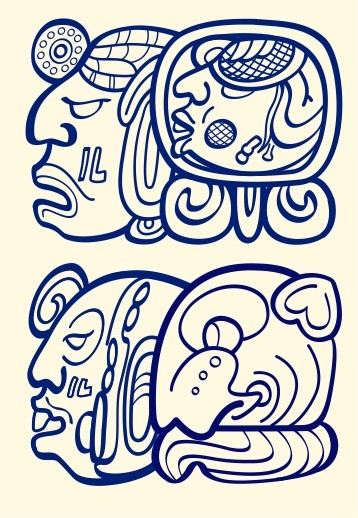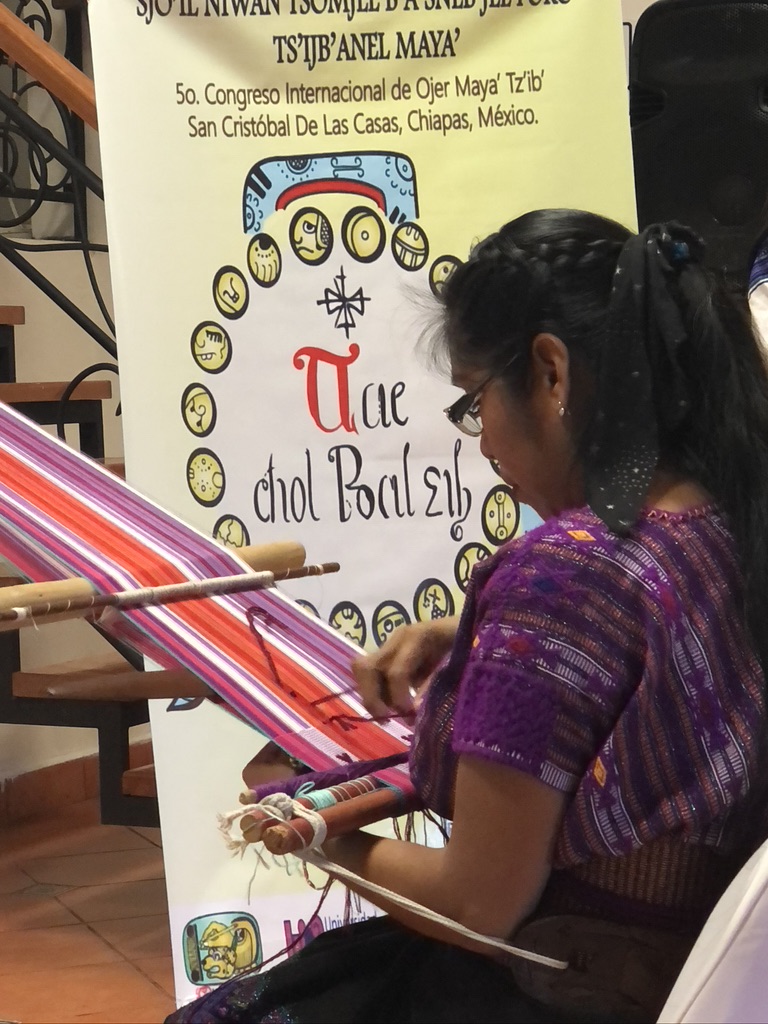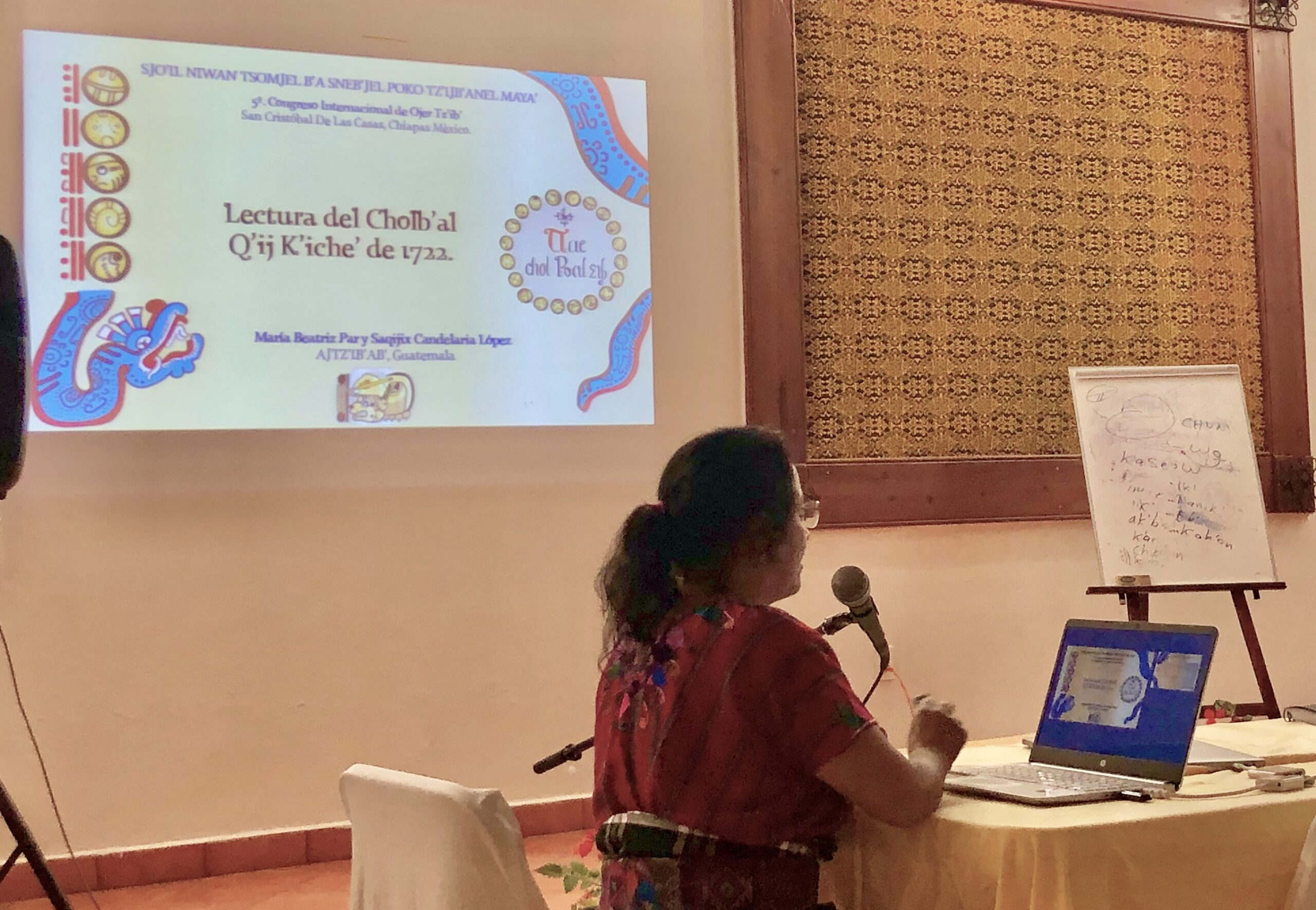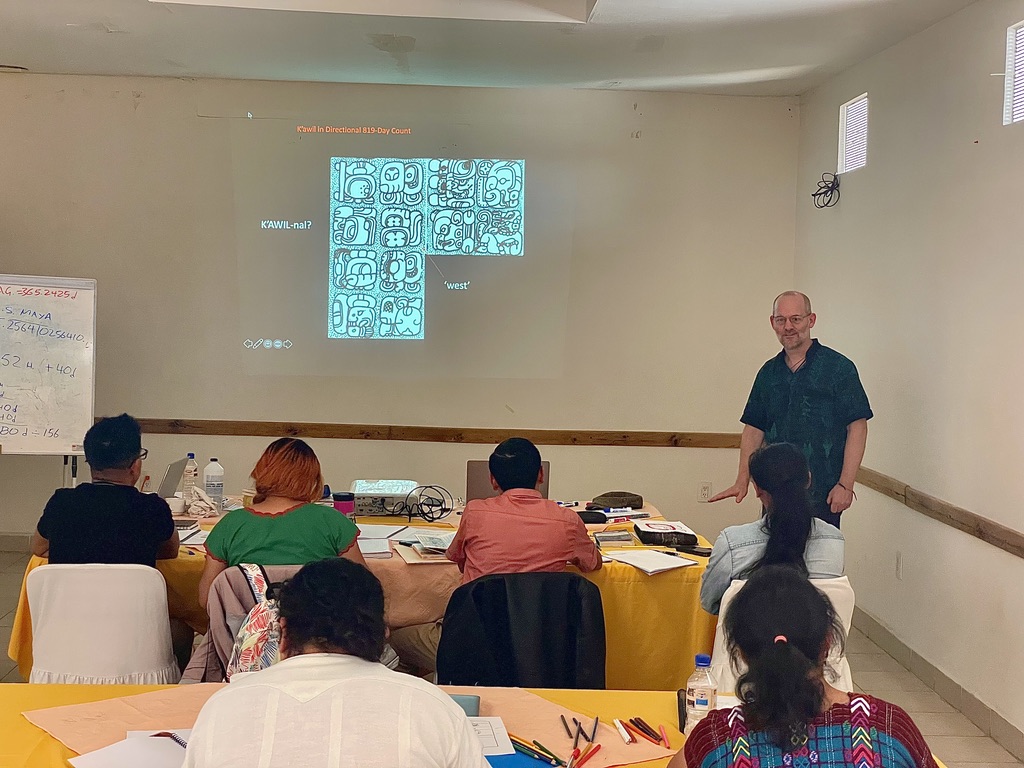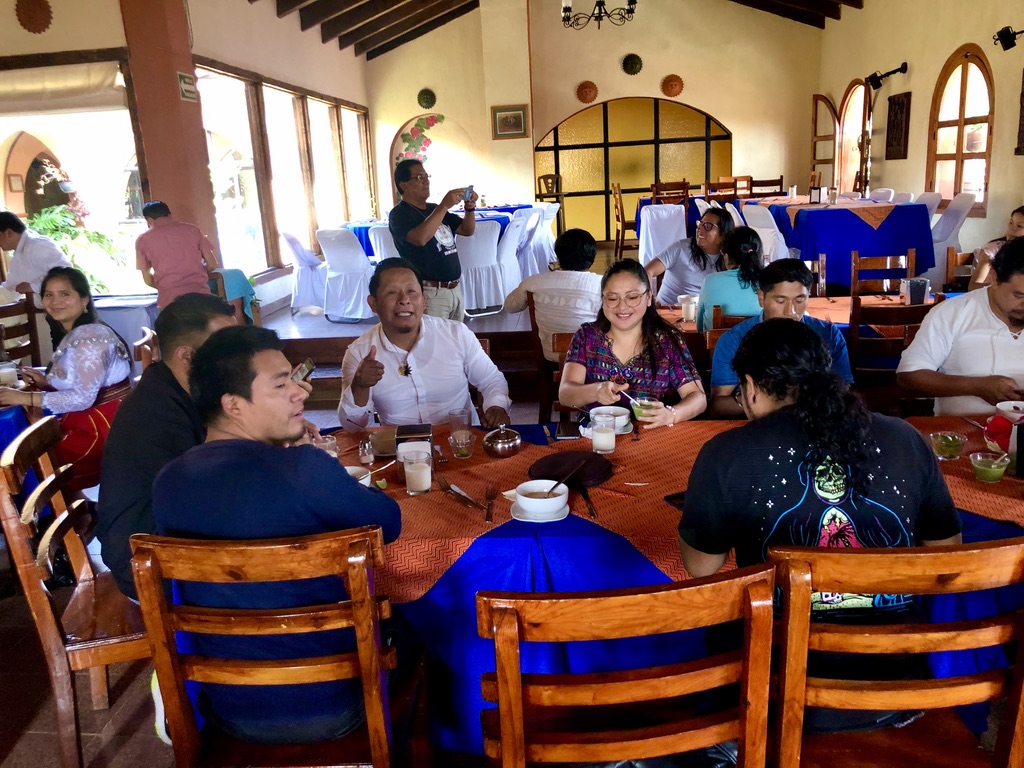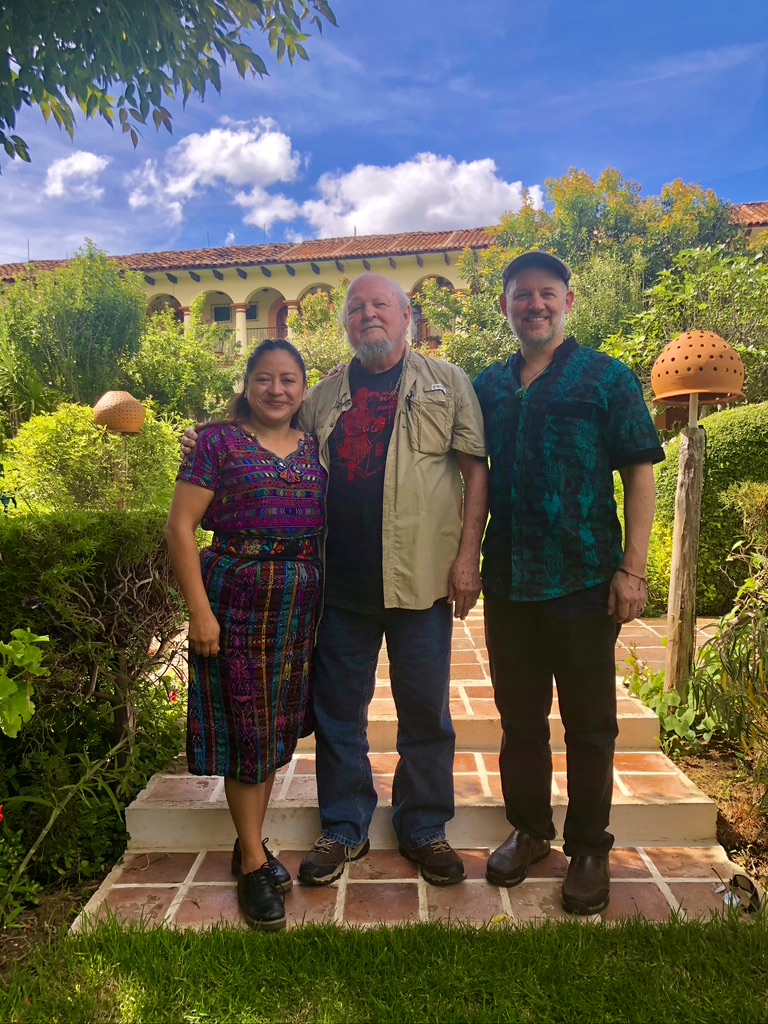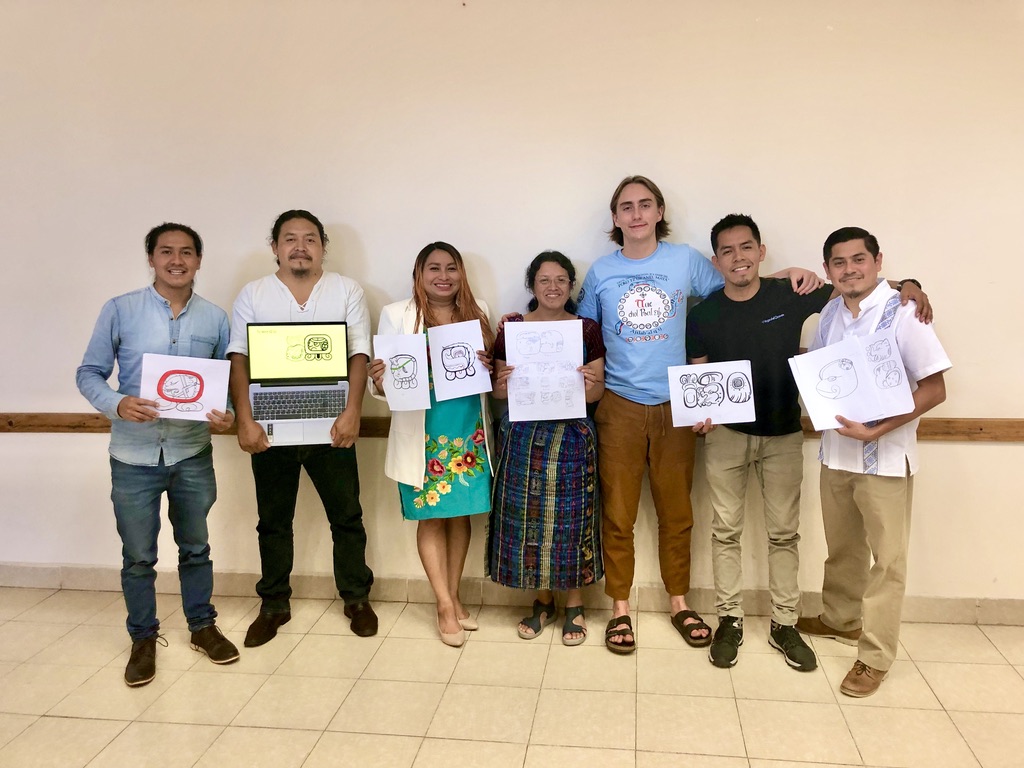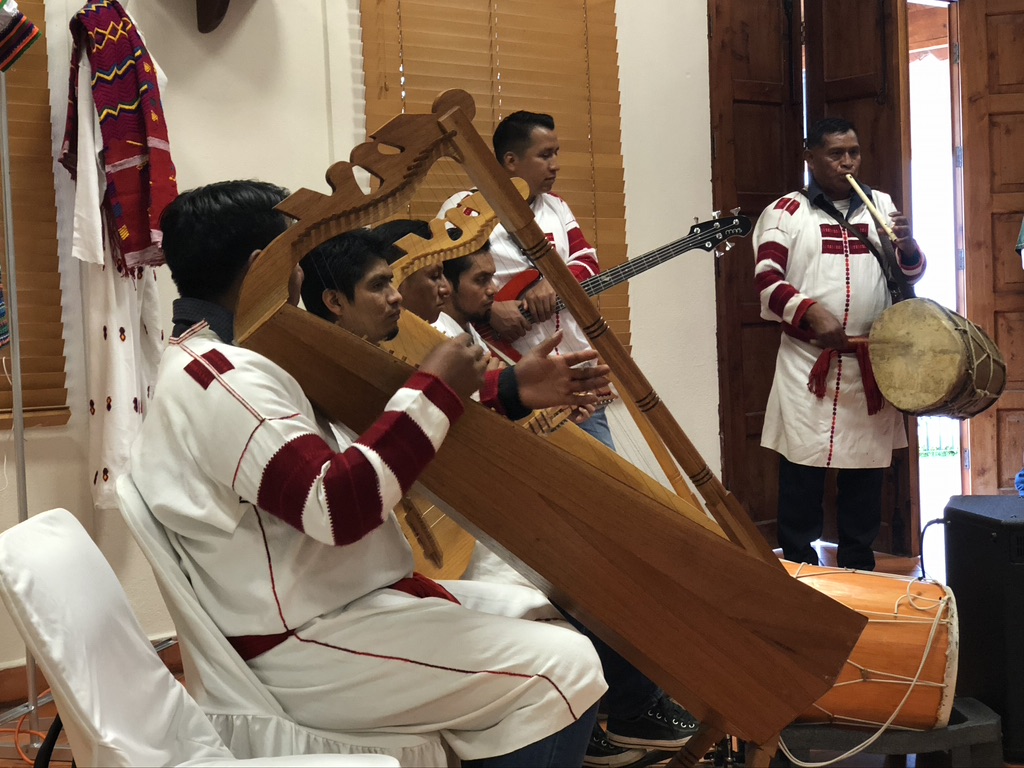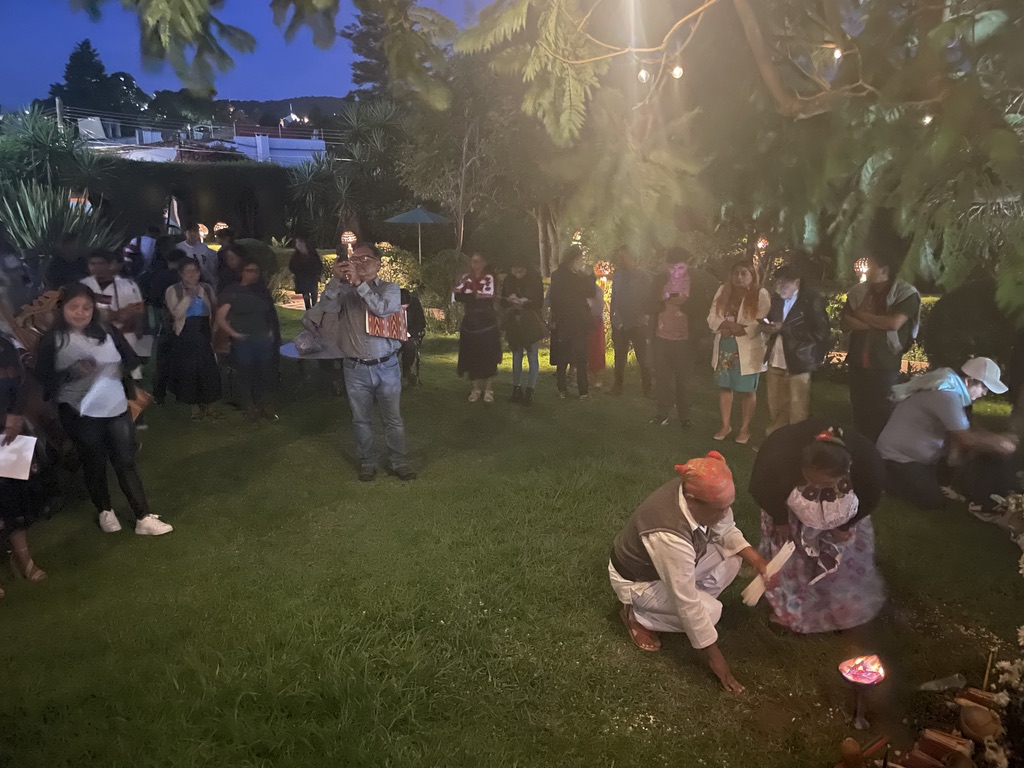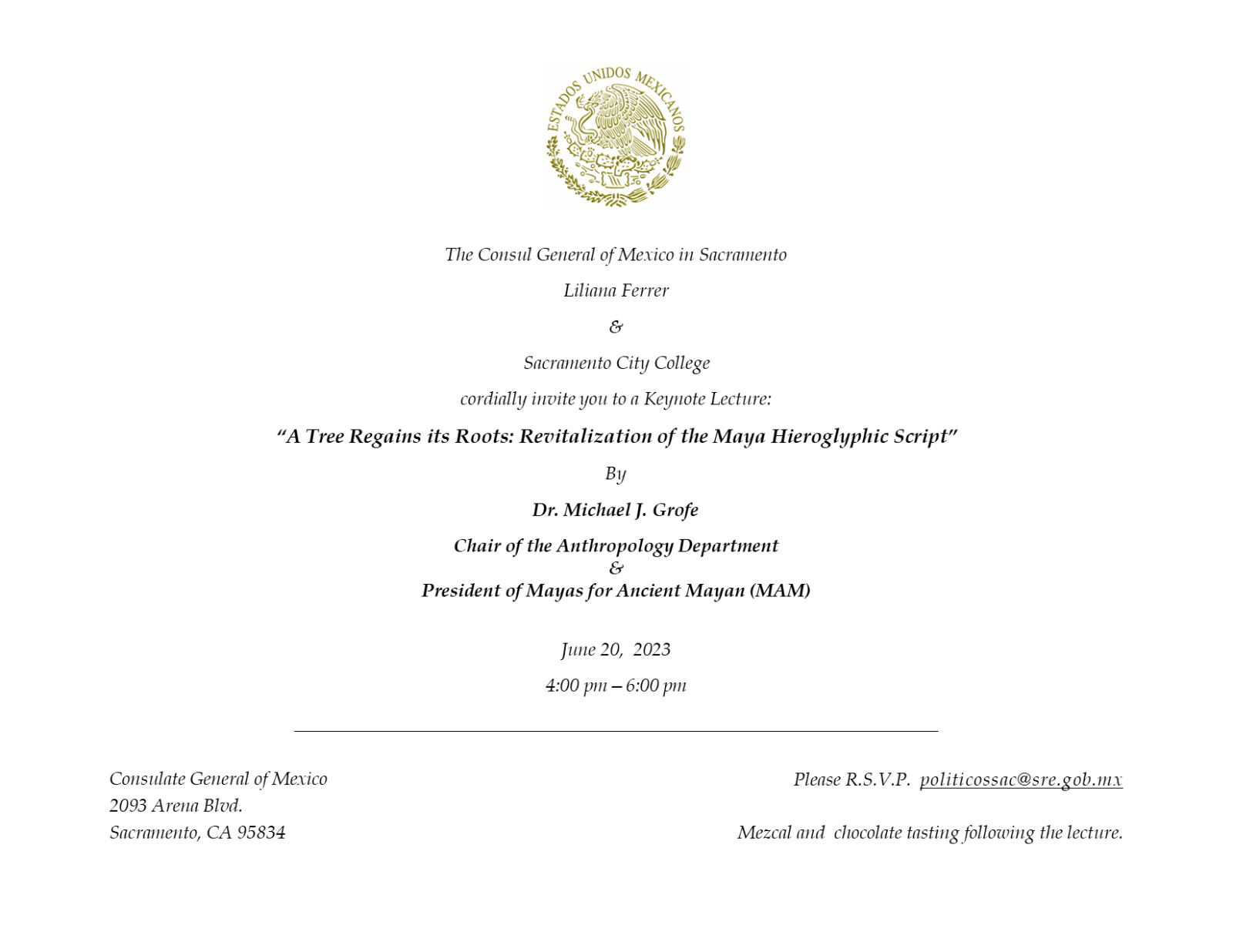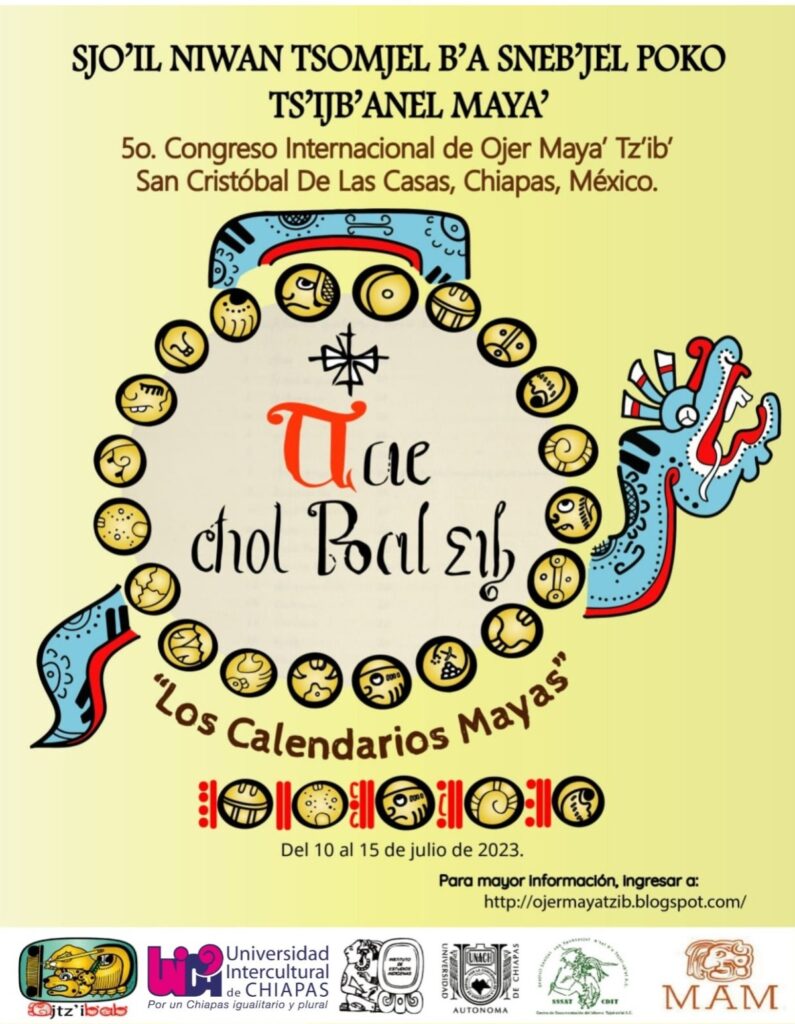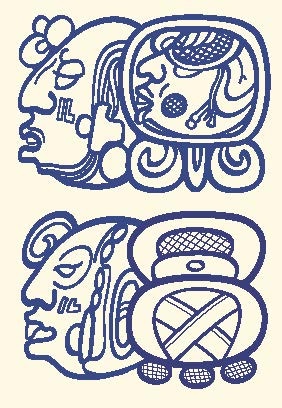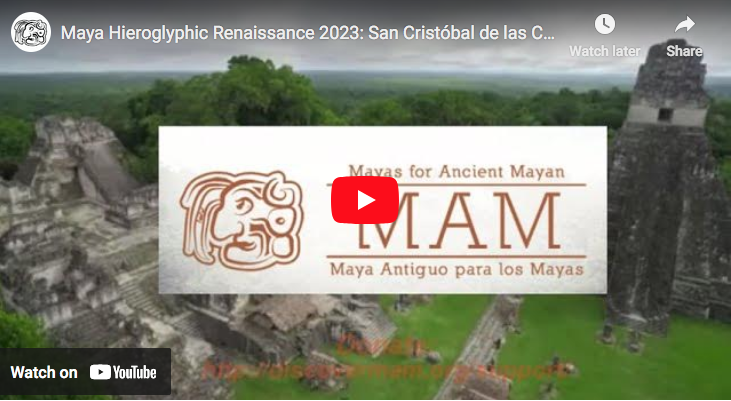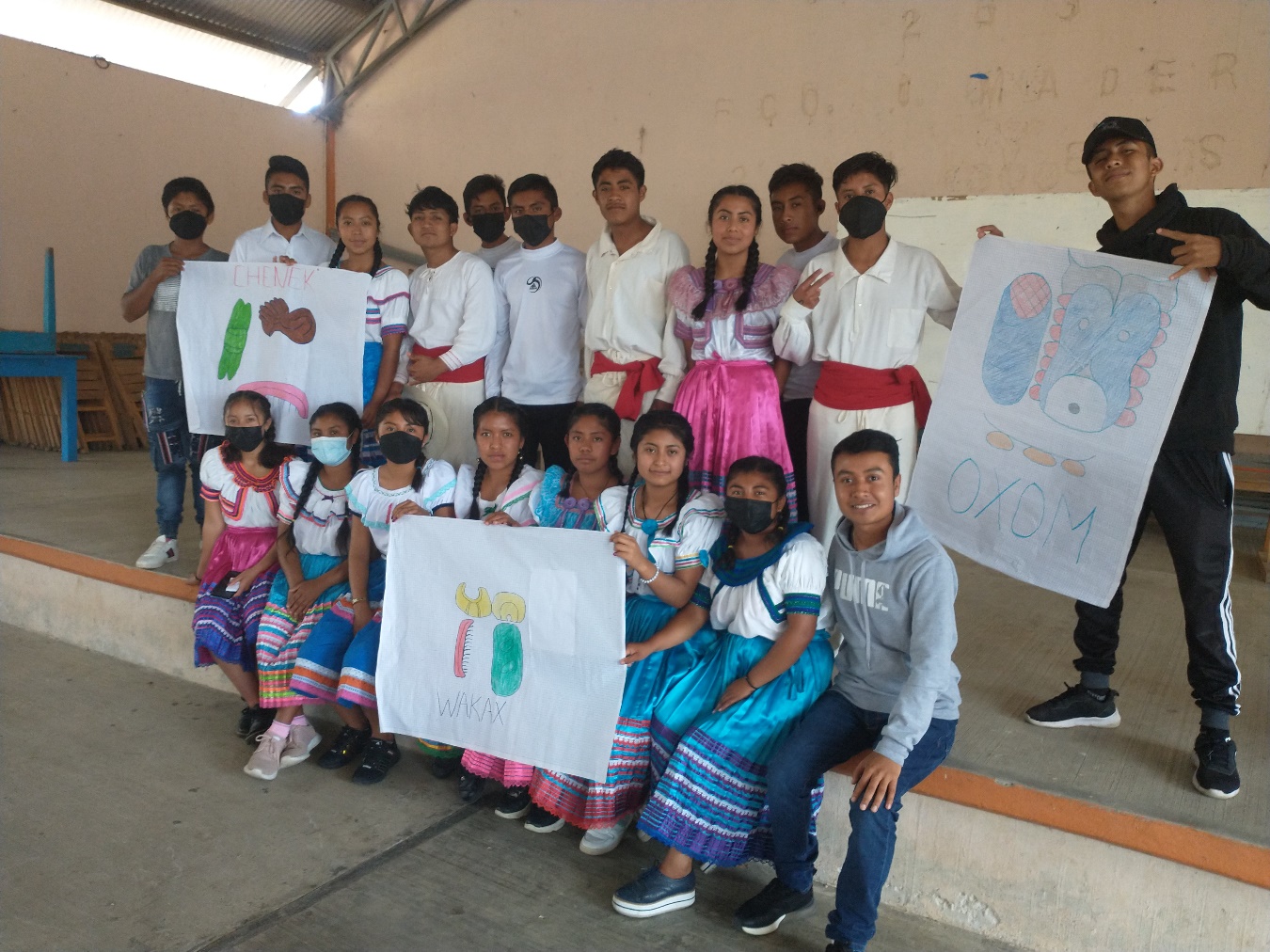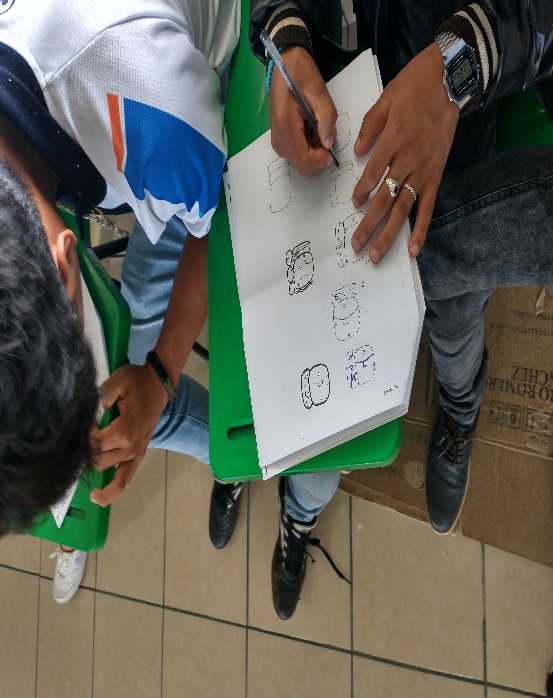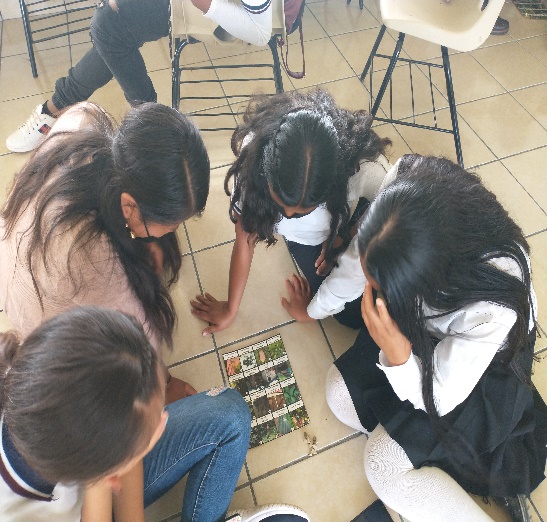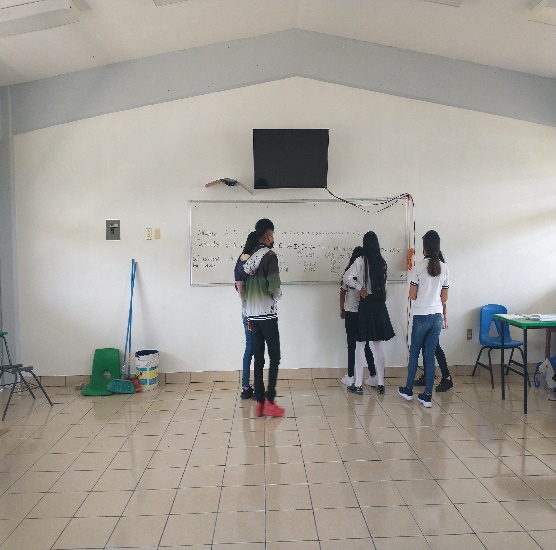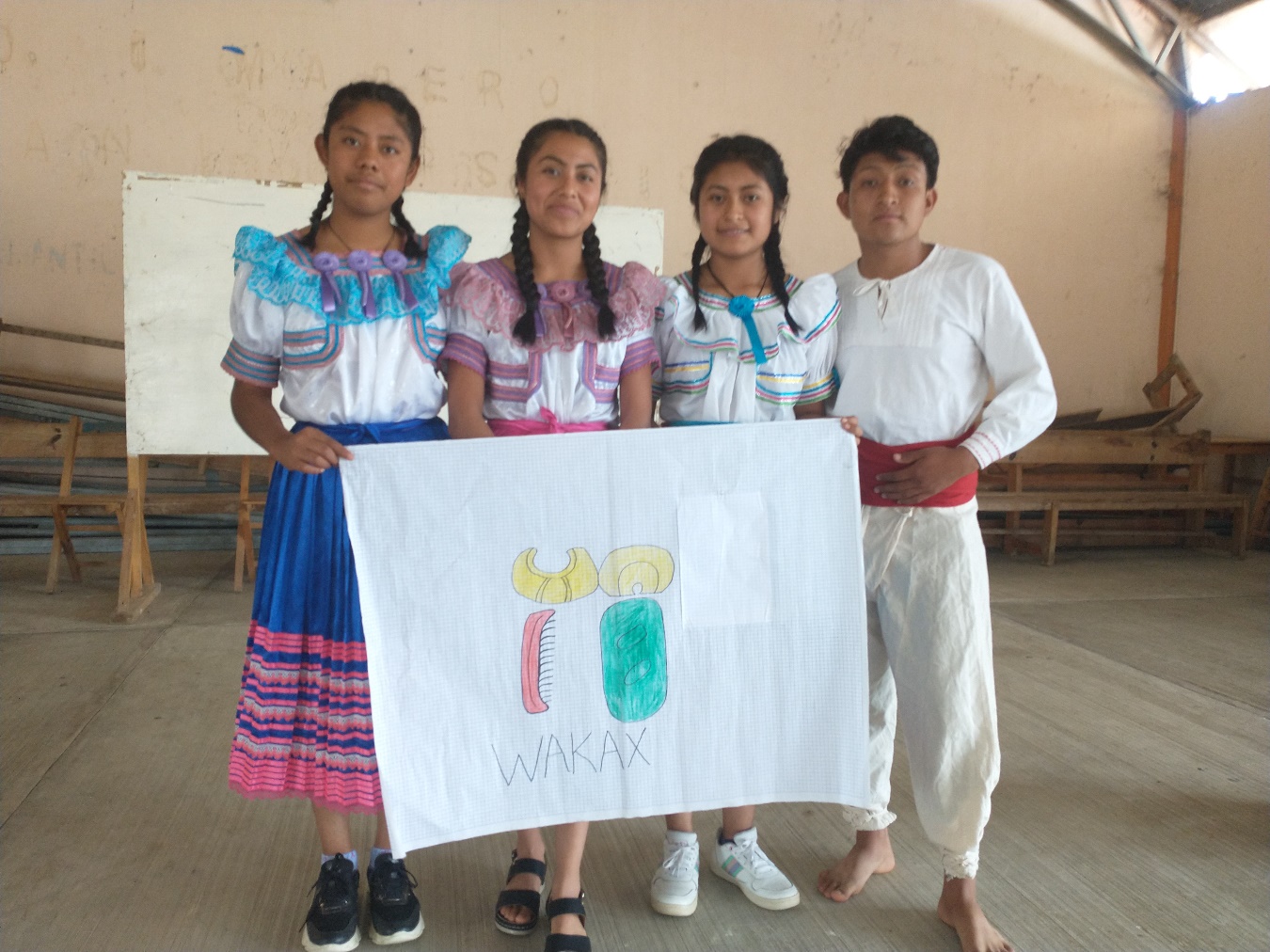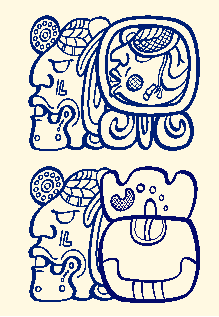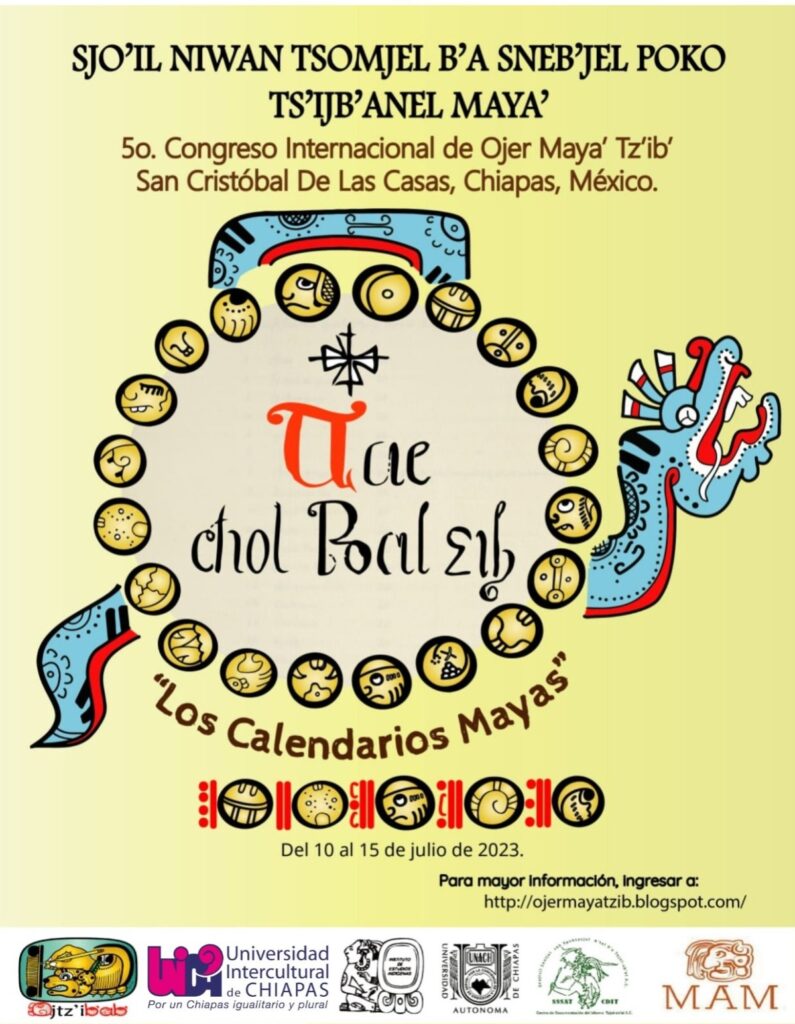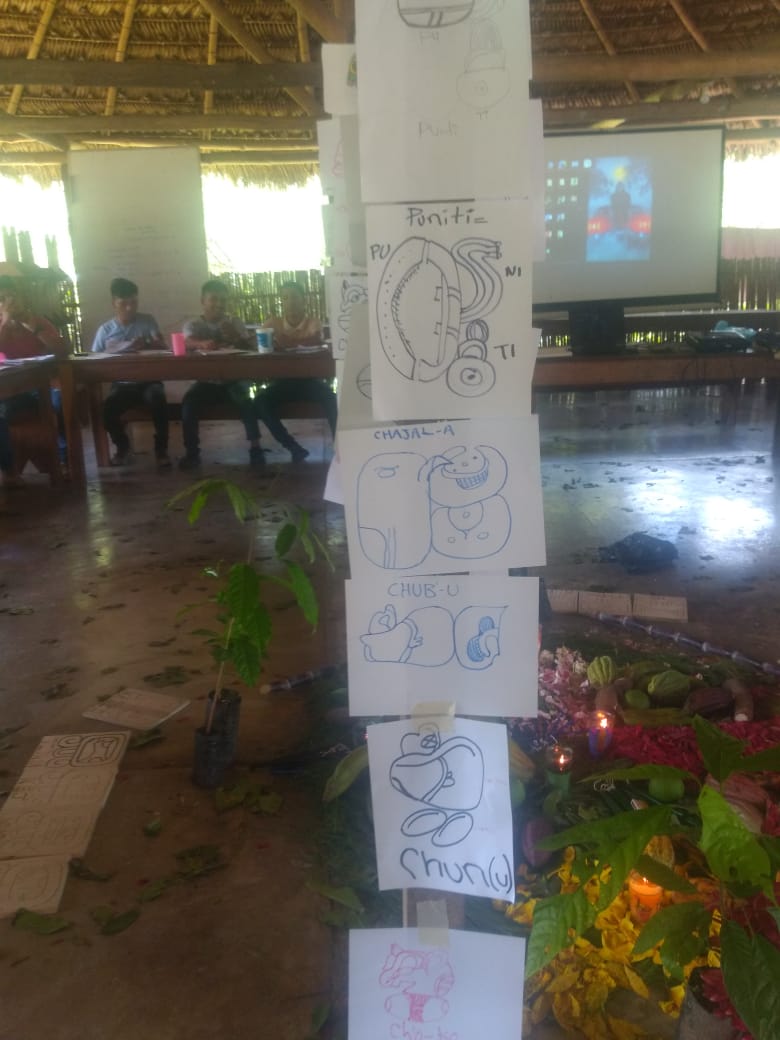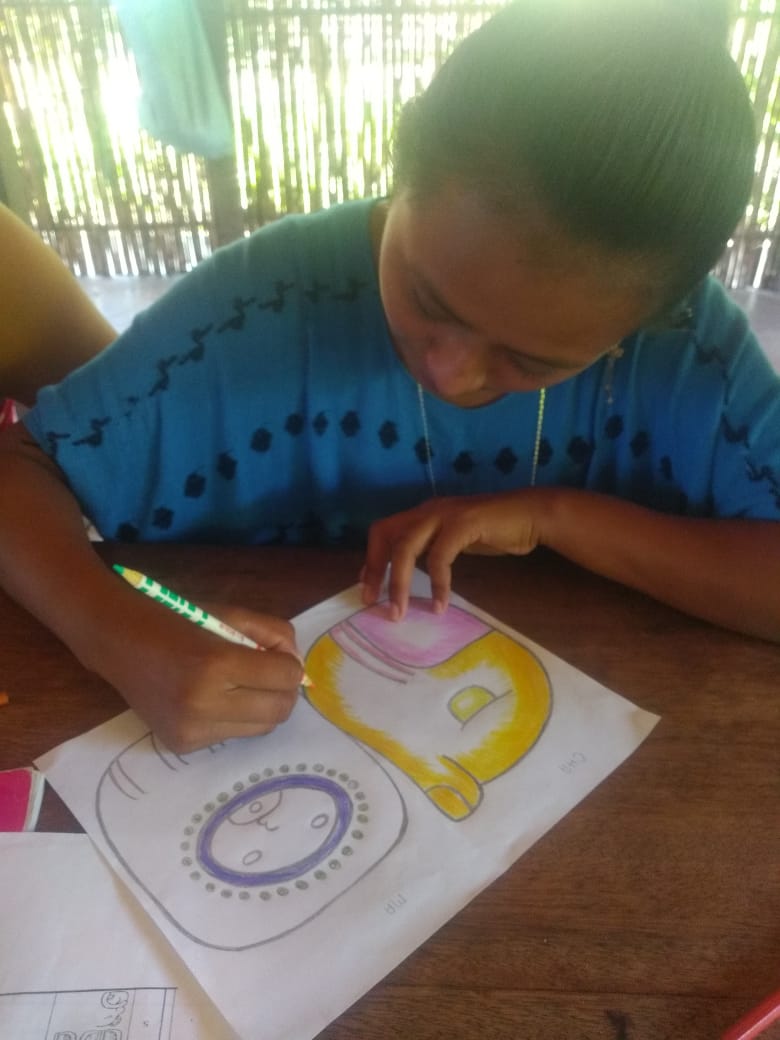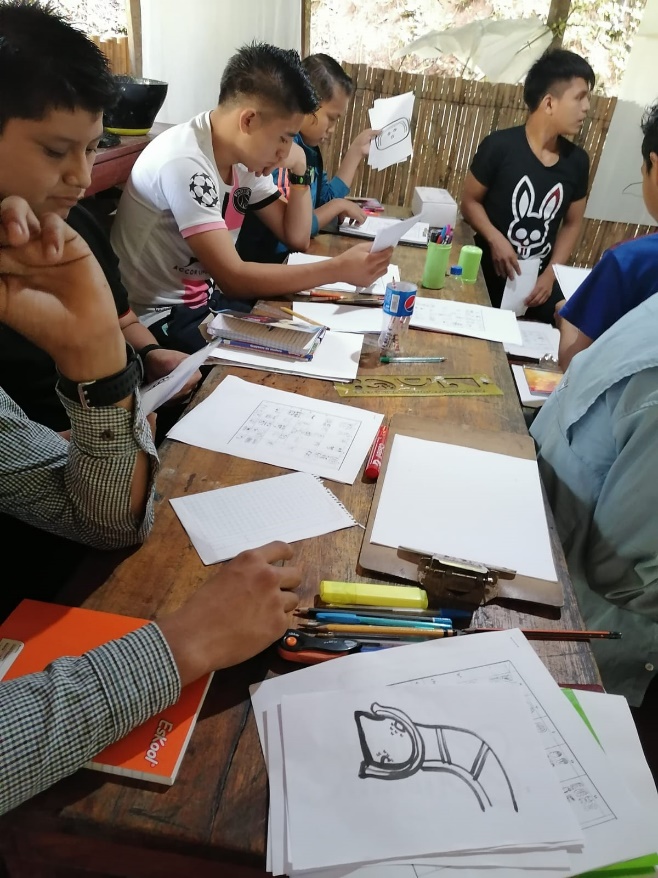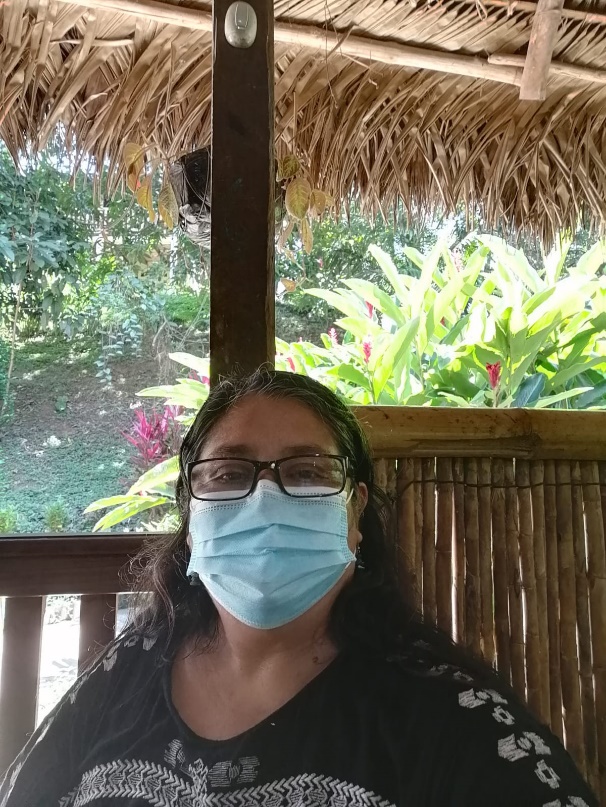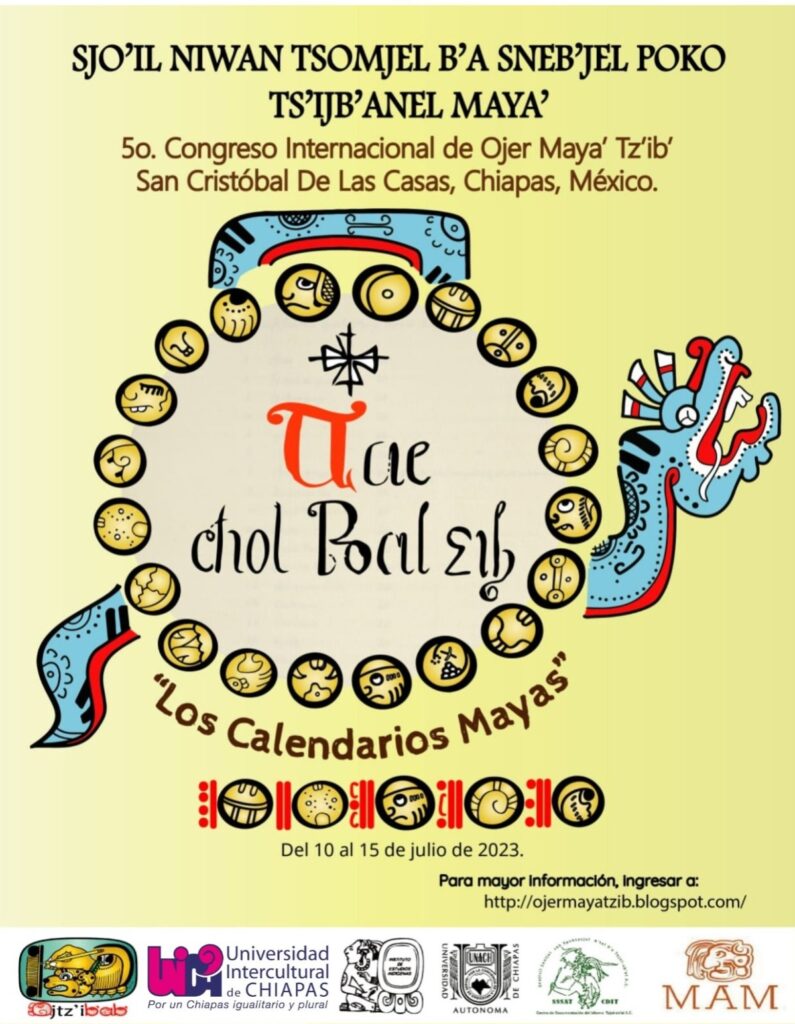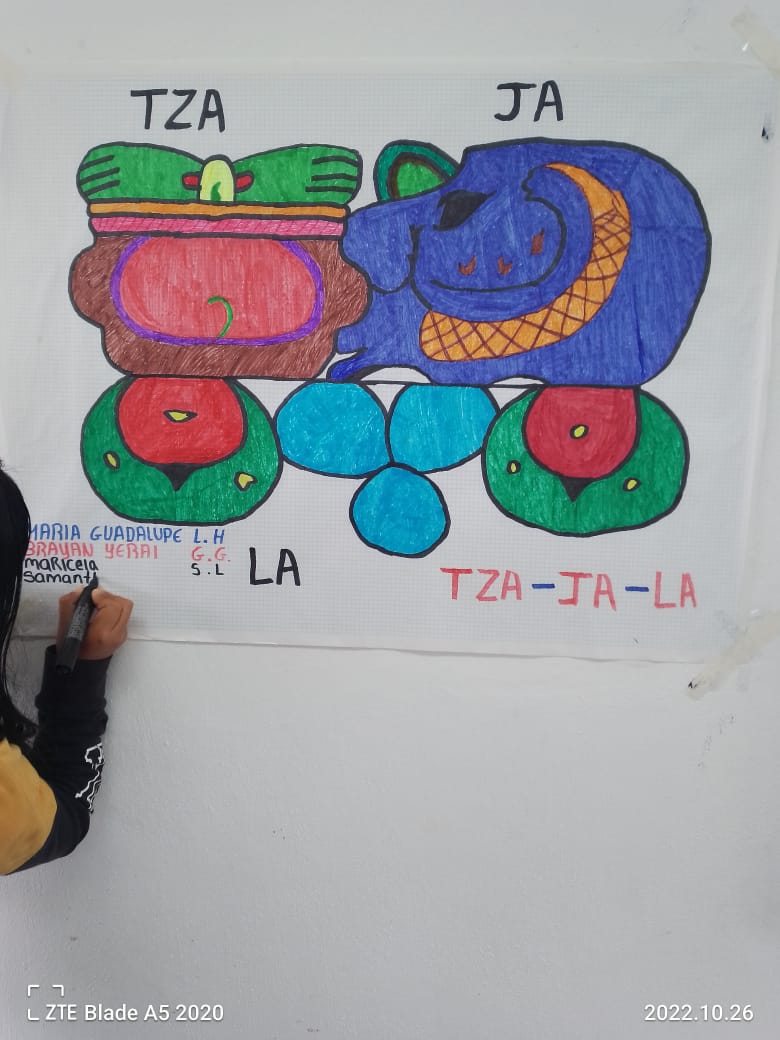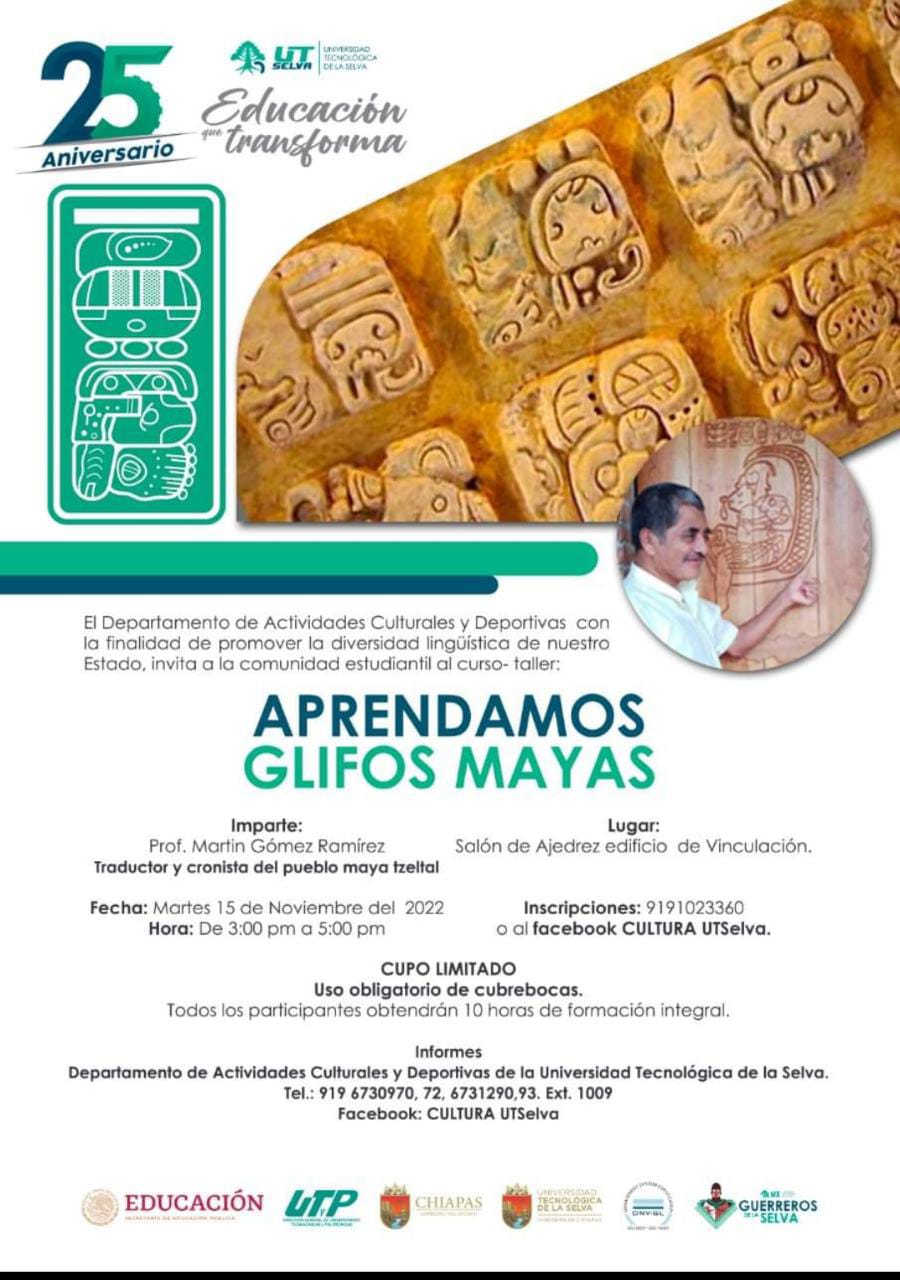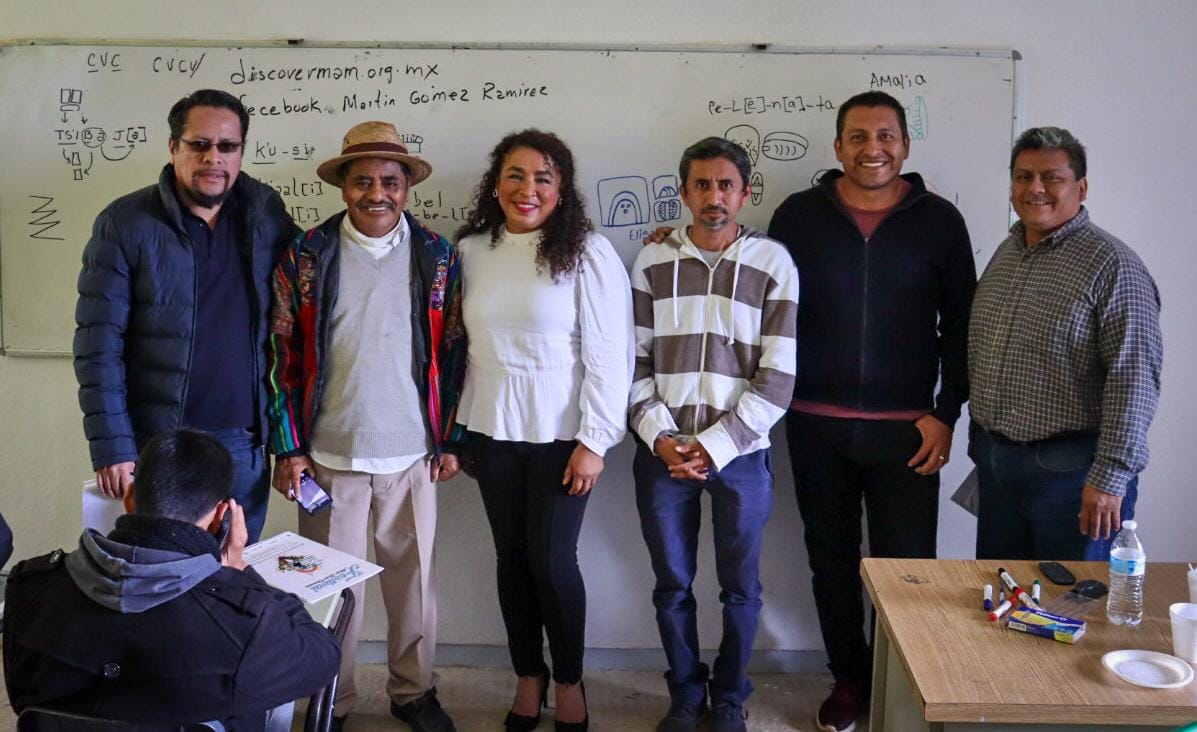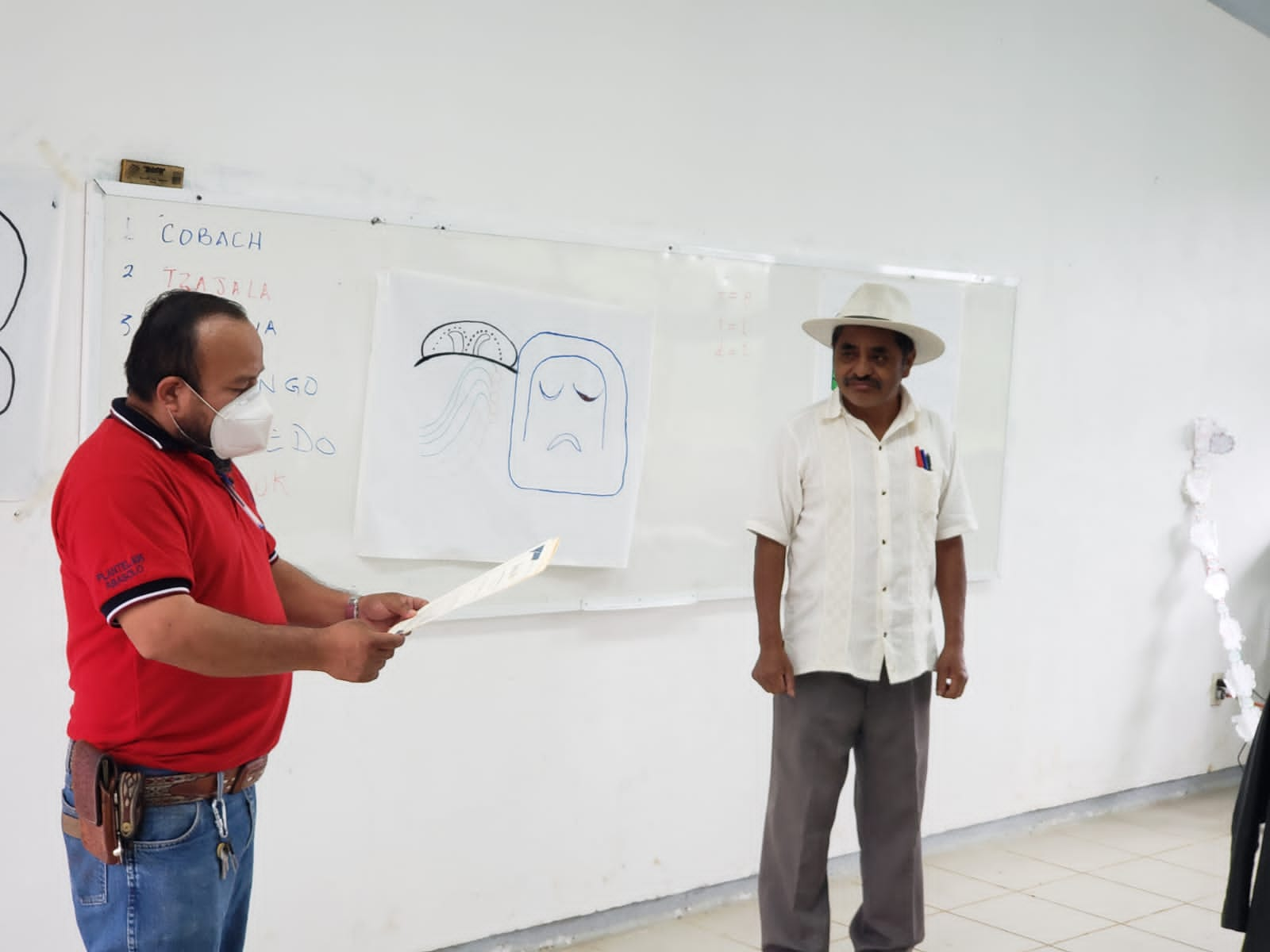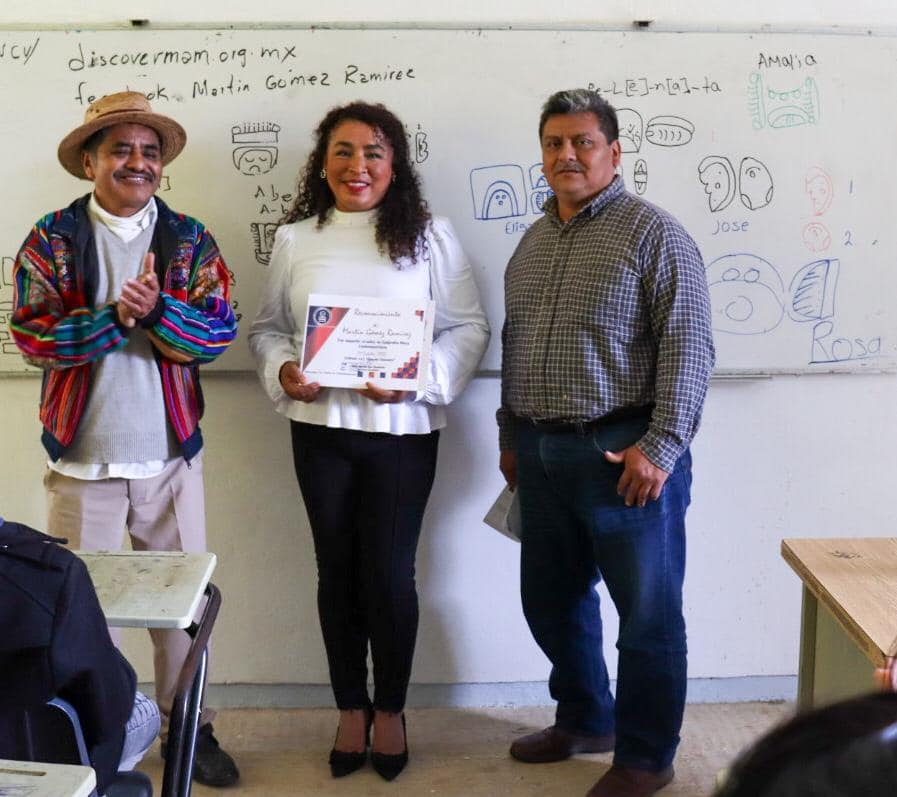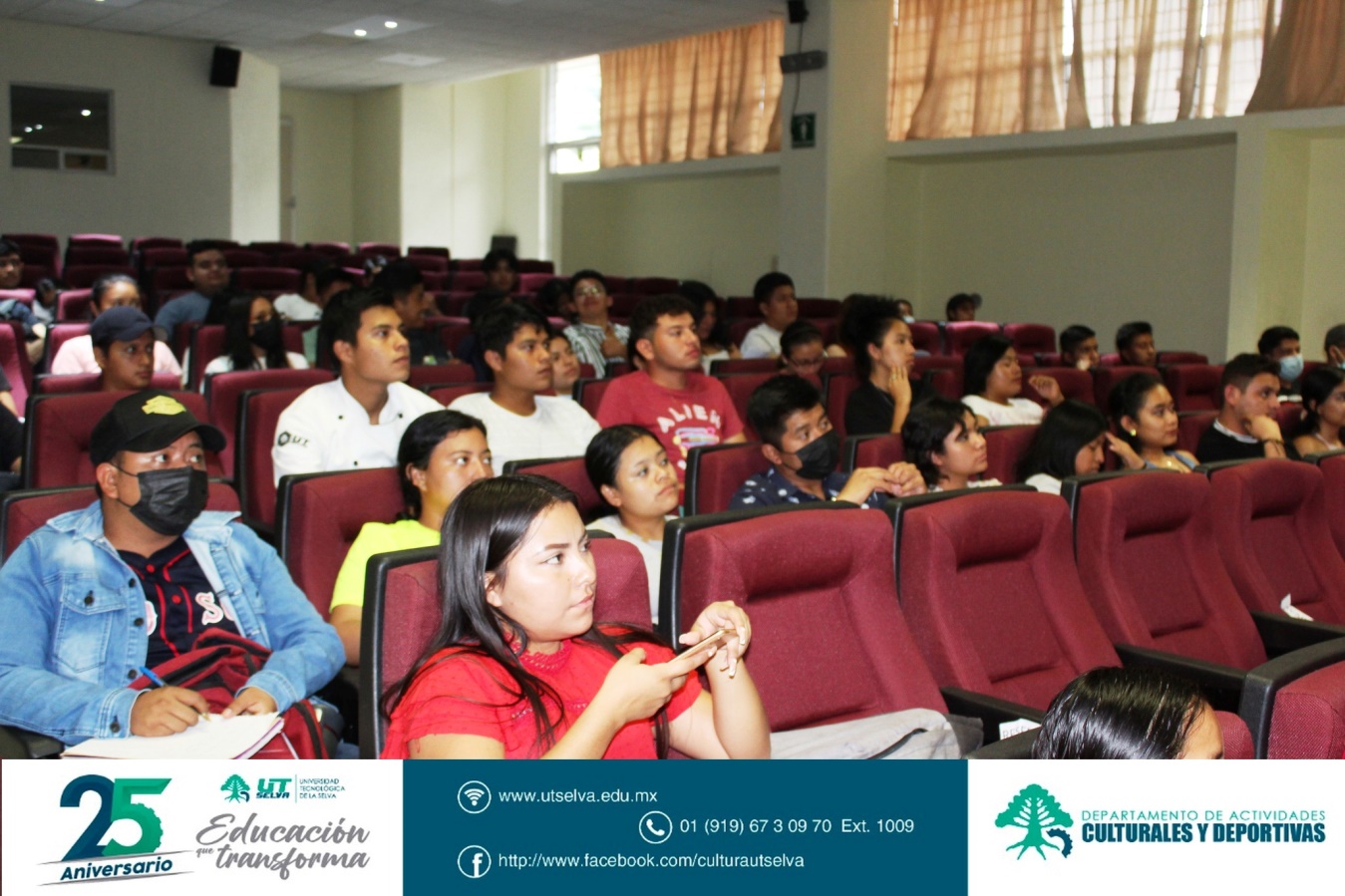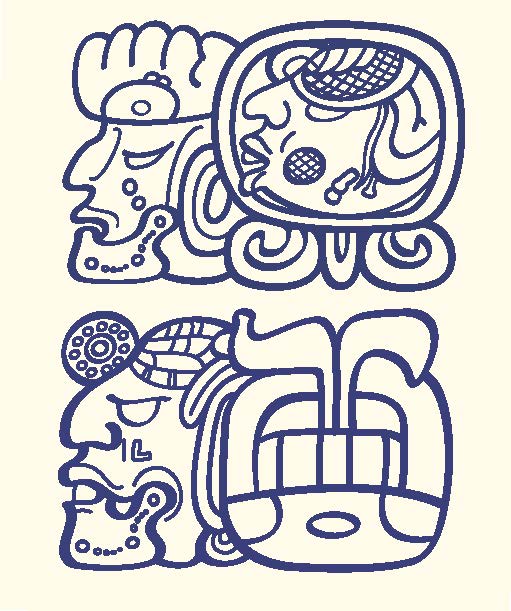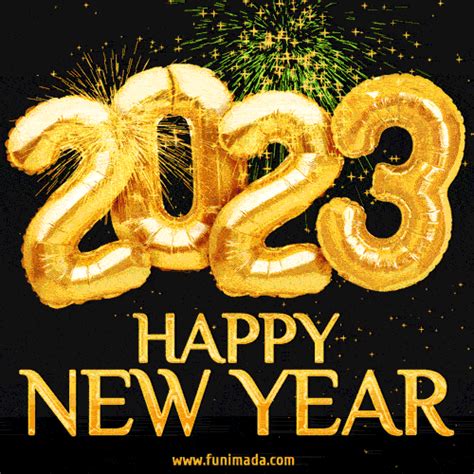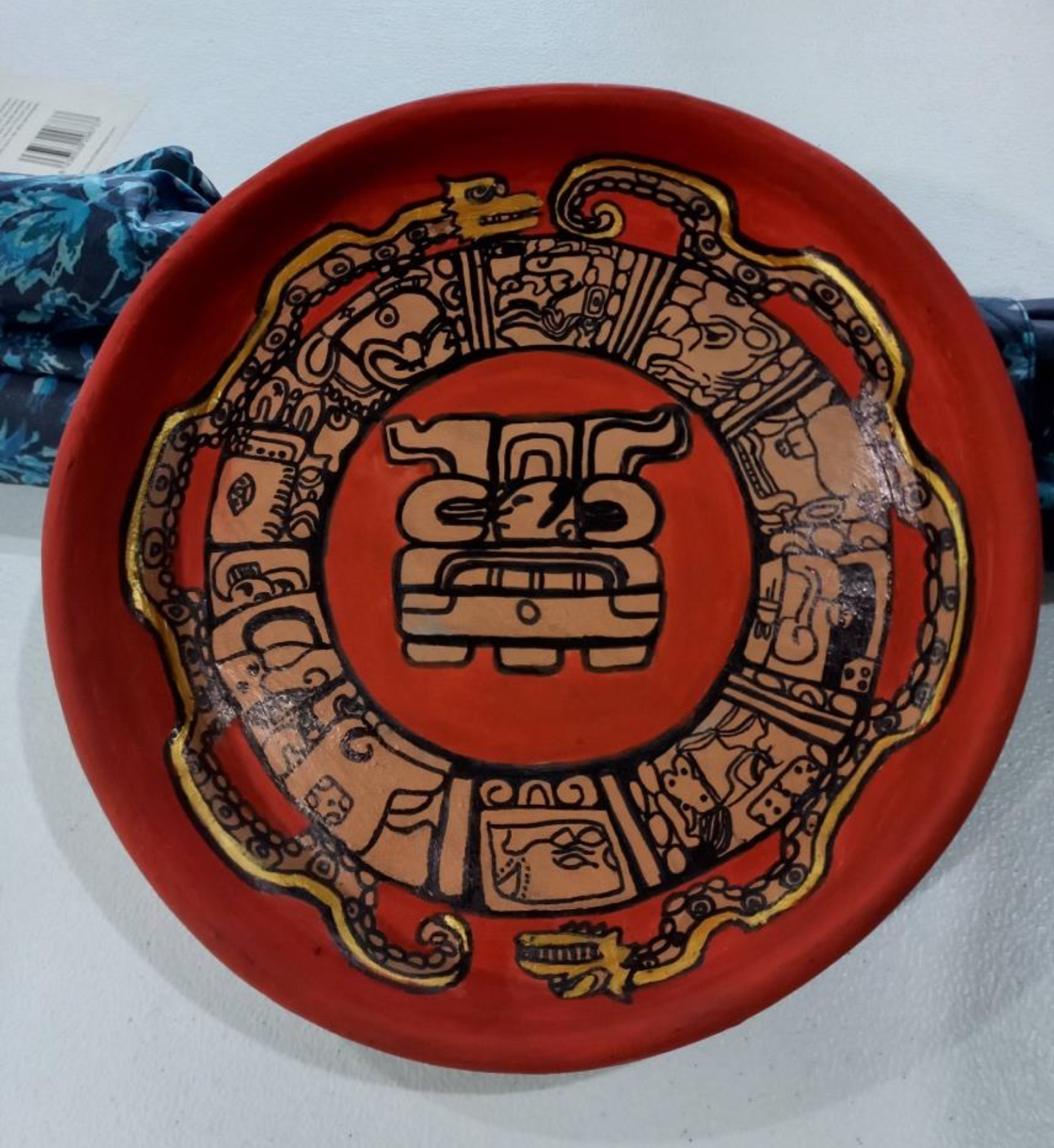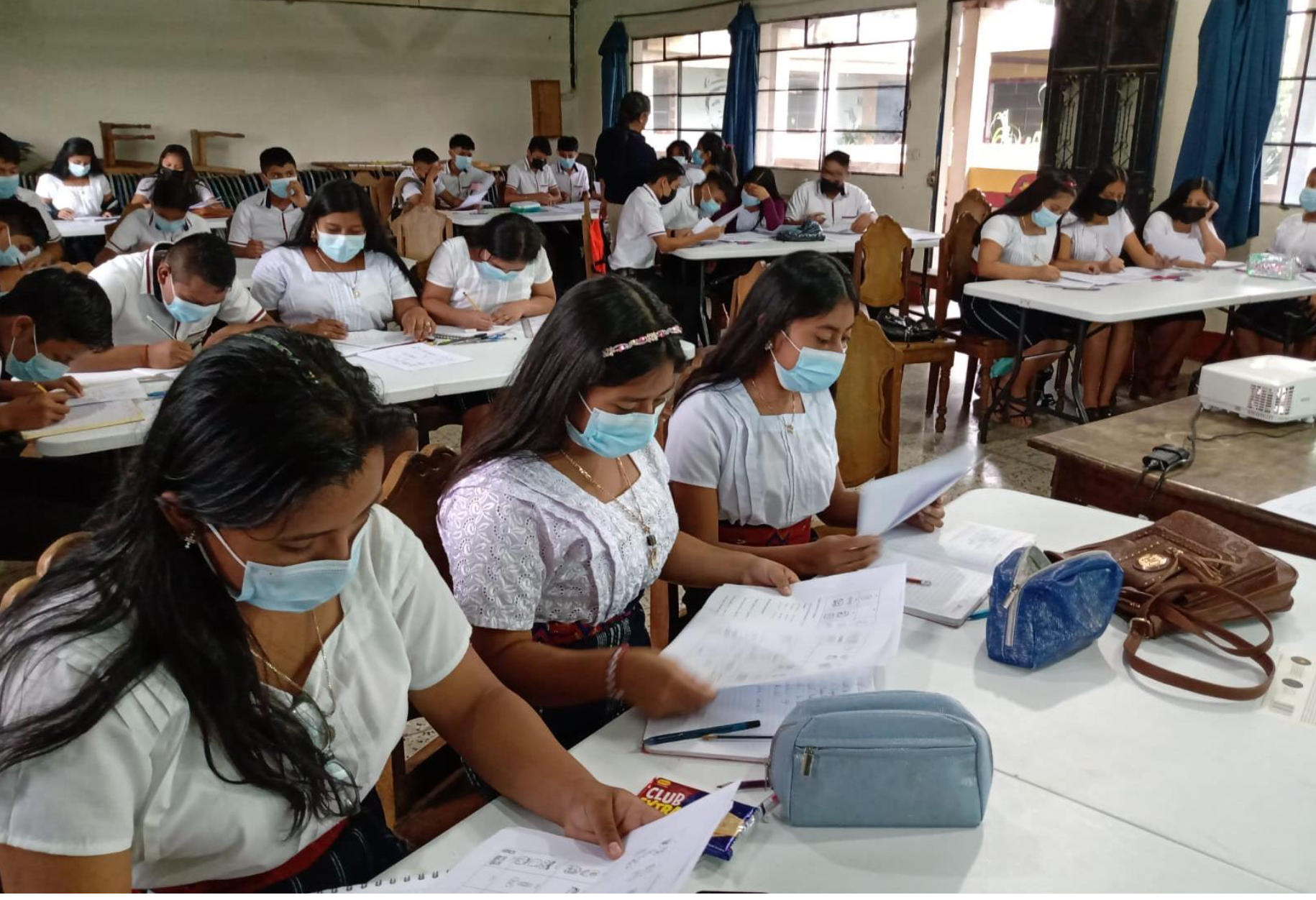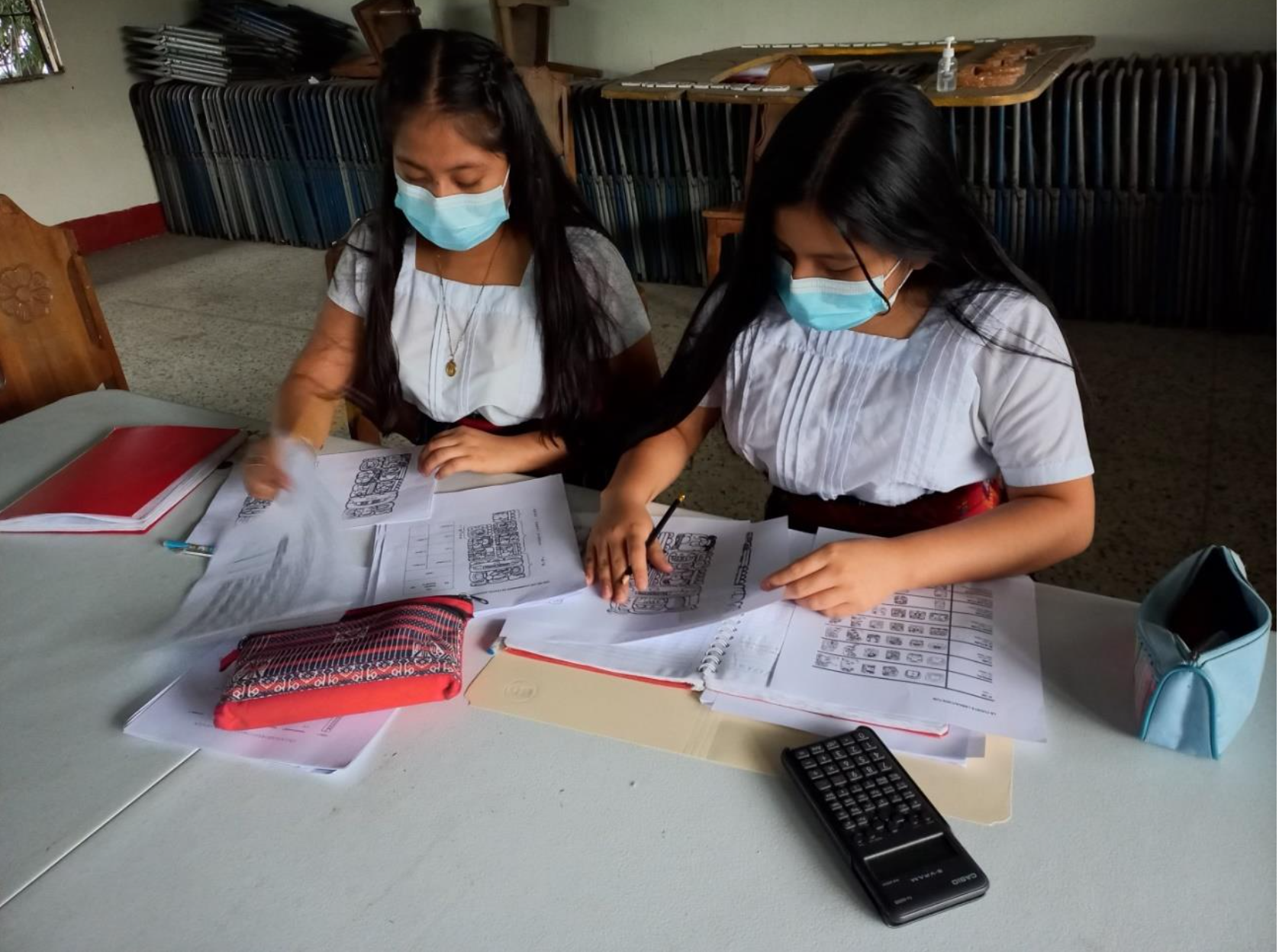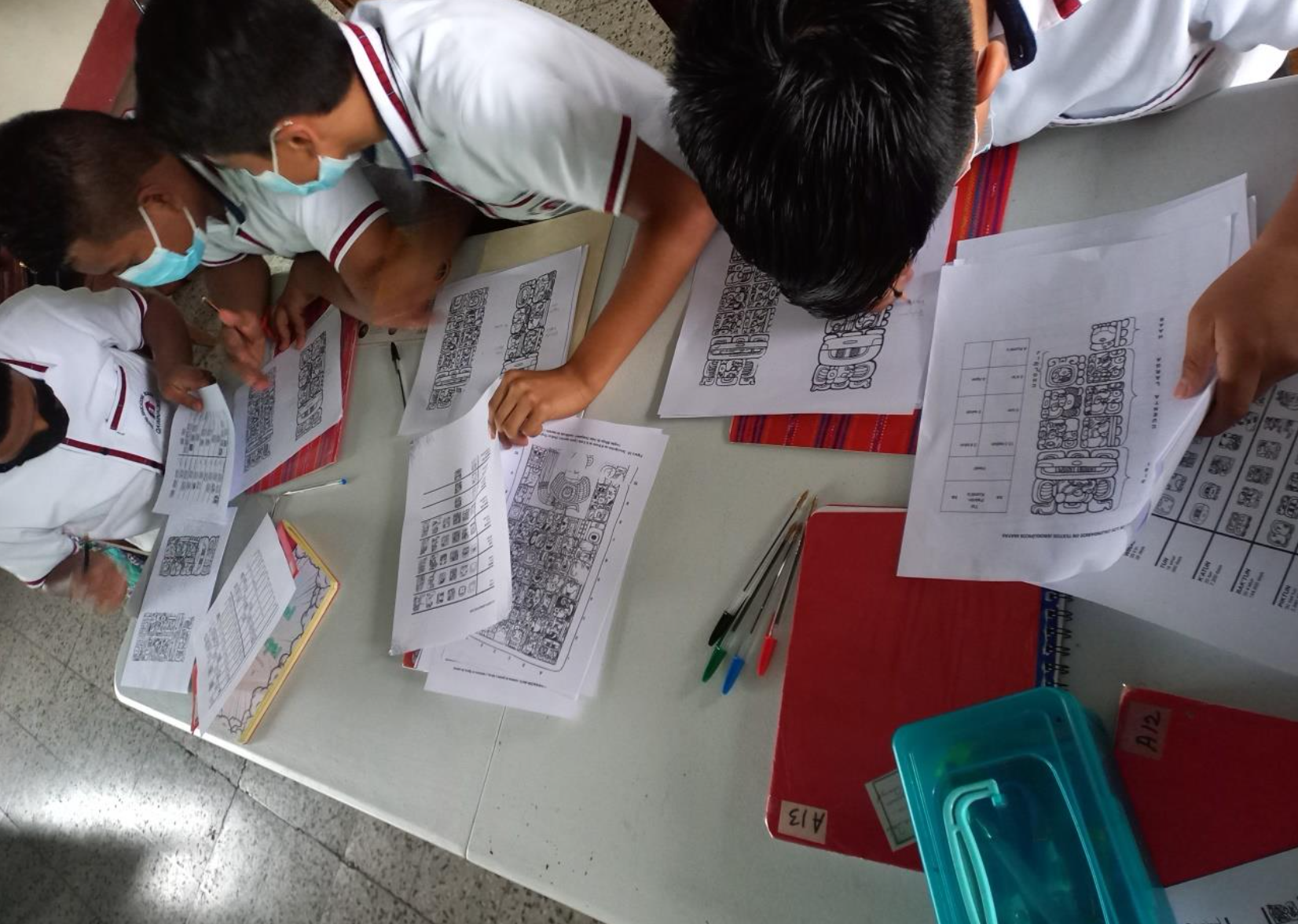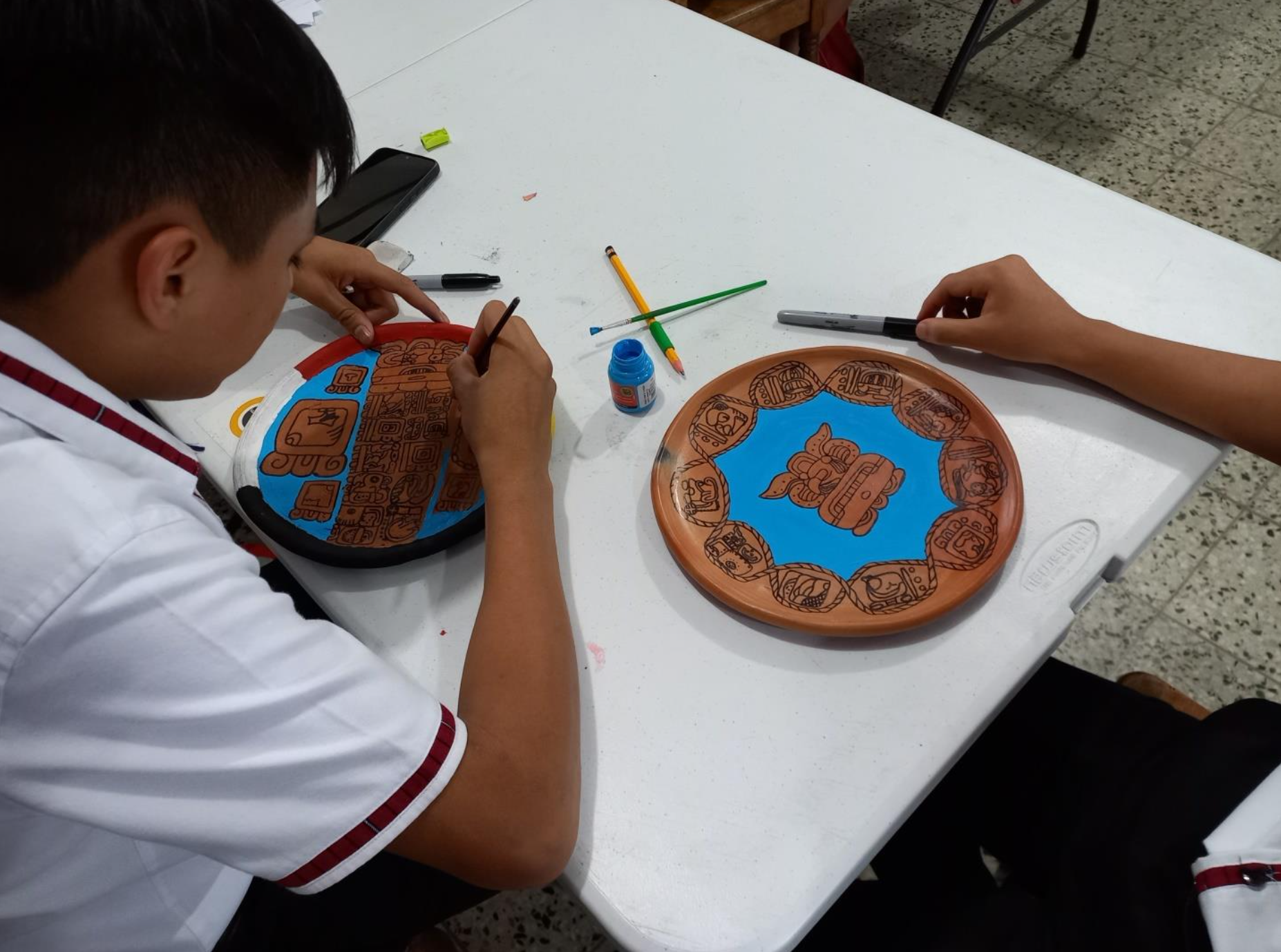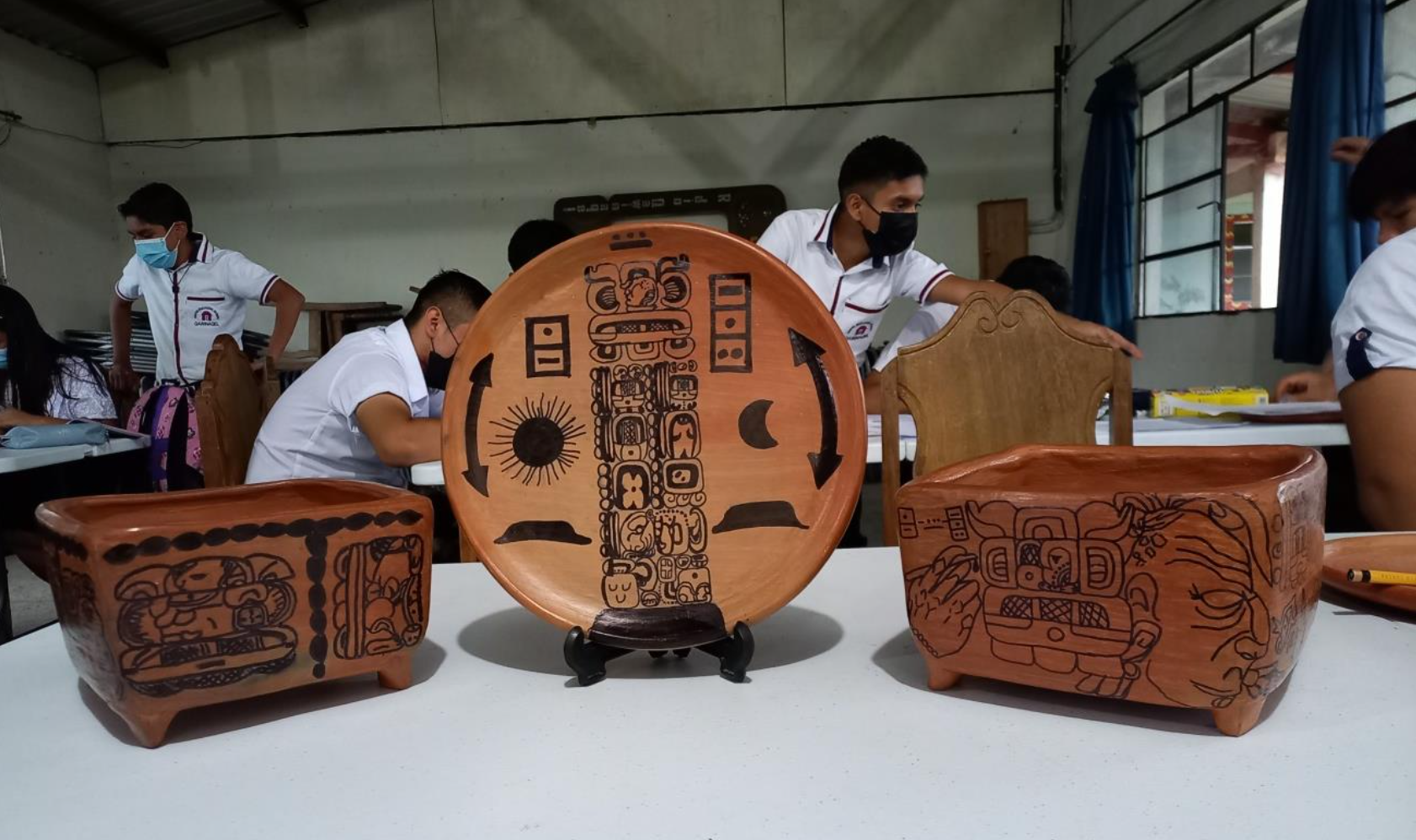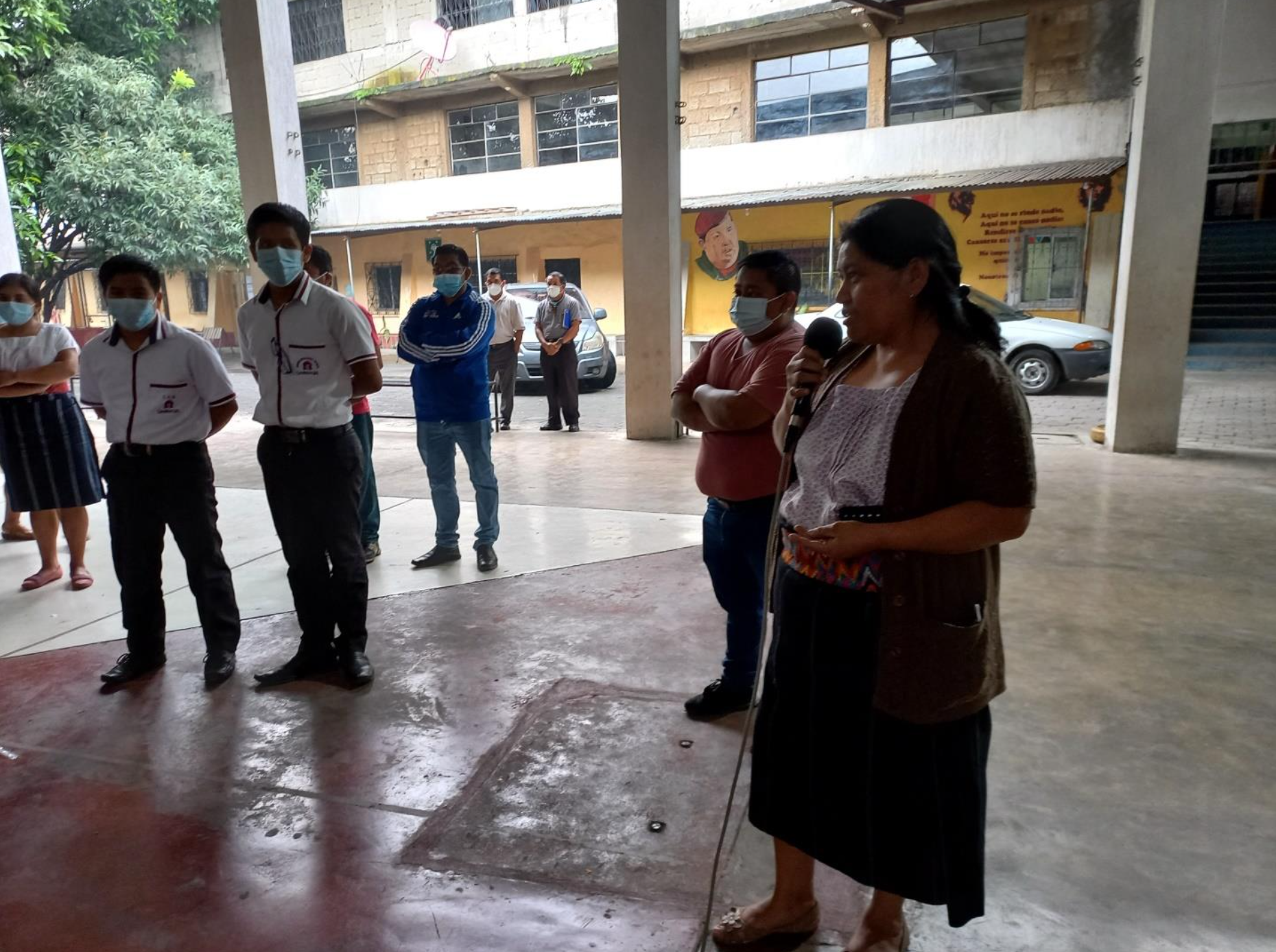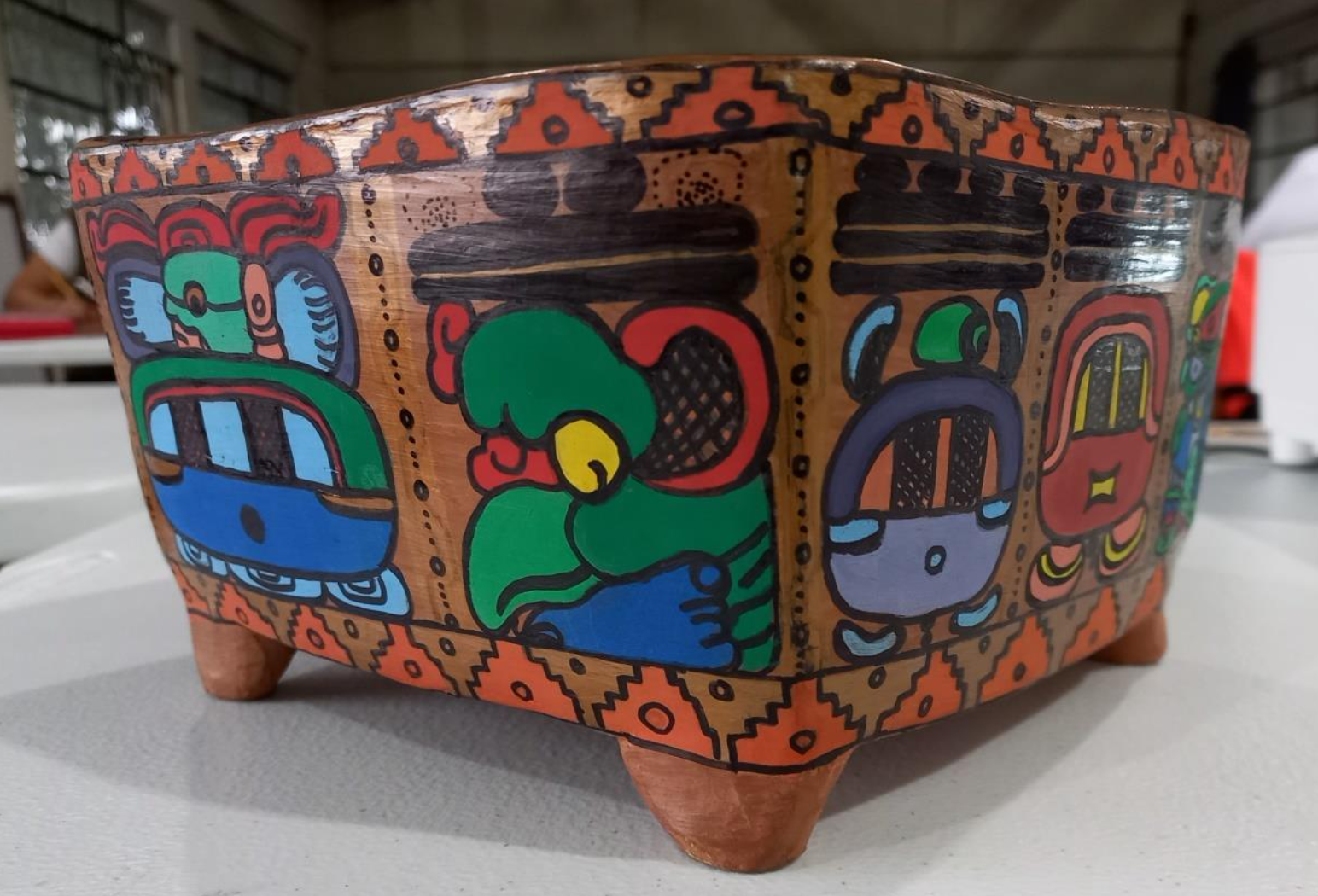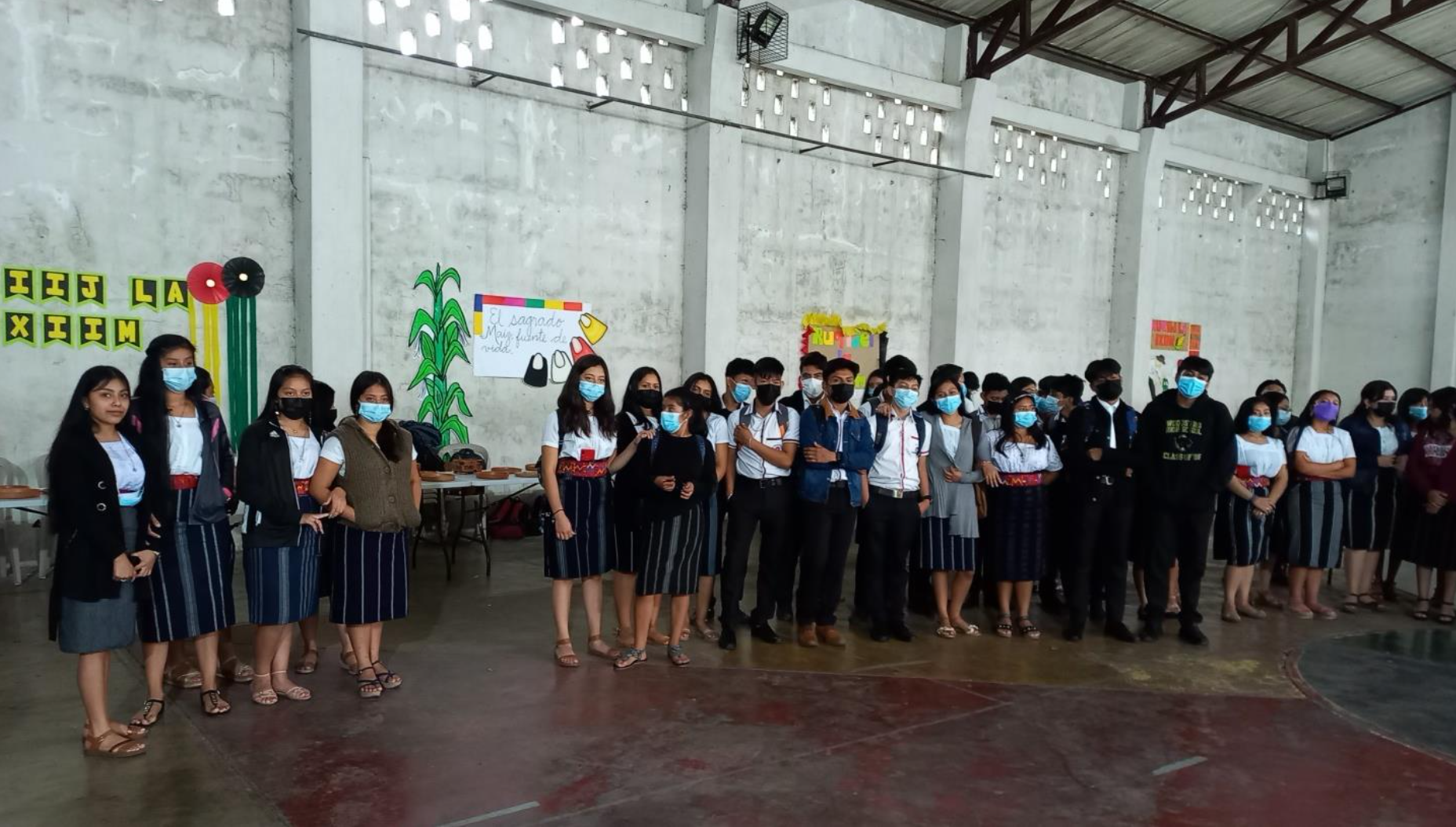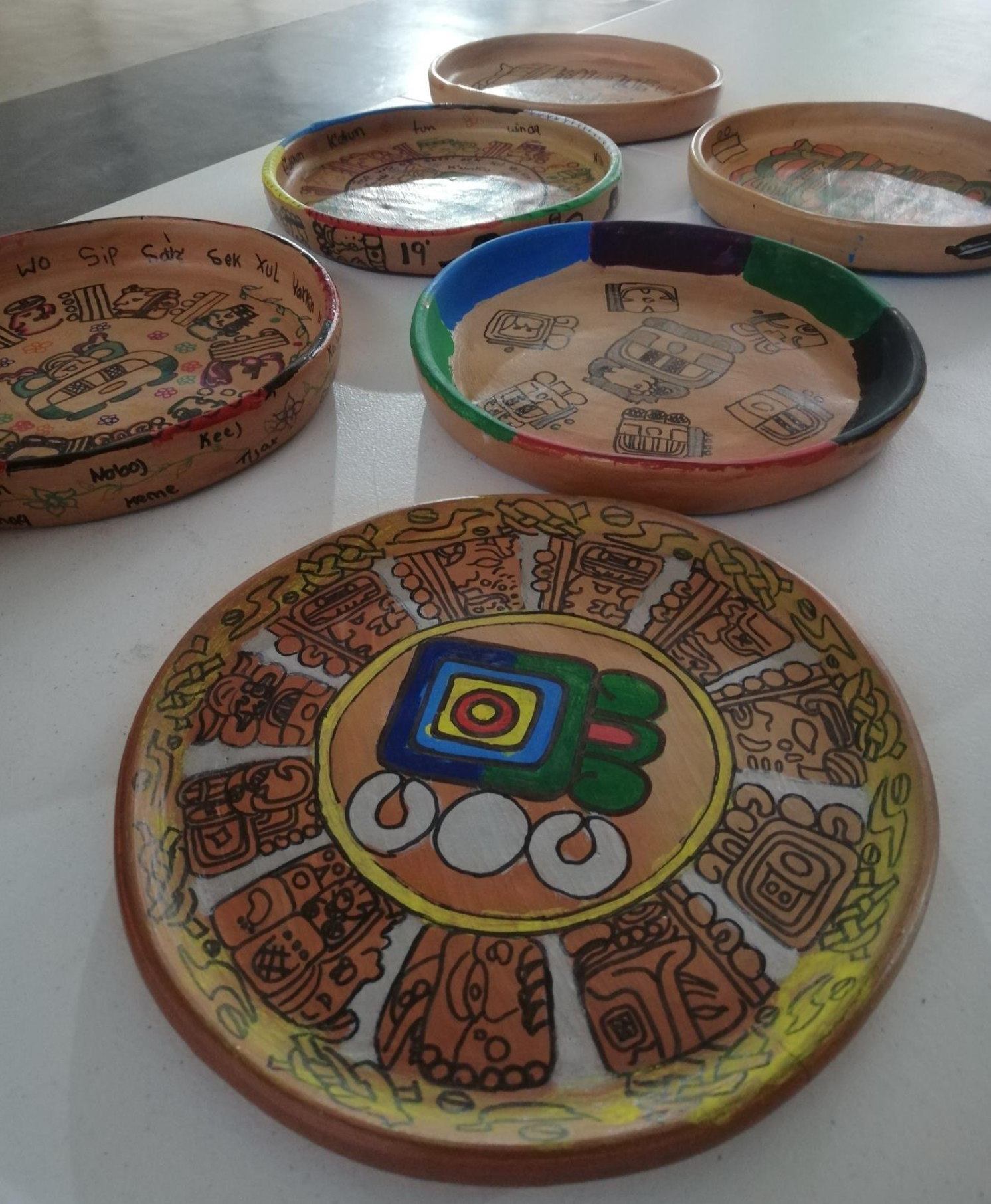
Interview with Ajpub’ Pablo García Ixmatá
Video by Henry Bernabé Pacay Buc
3 Ajaw 8 Xul: Drawing by Jorge Pérez de Lara
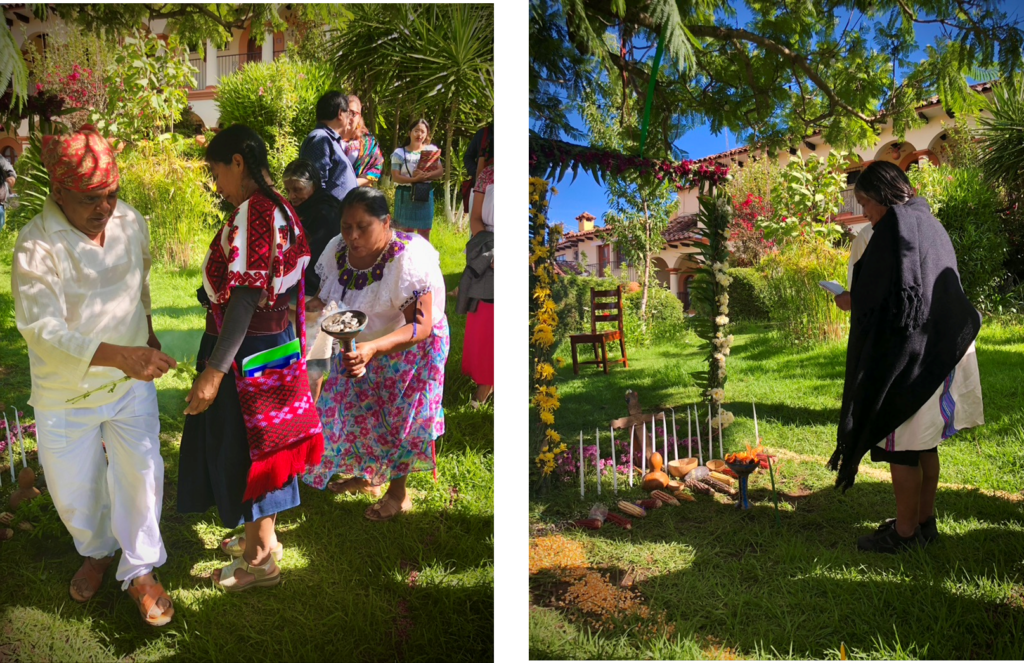
Opening Ceremonies, with Abuelo Nicolás and Nanci Velasco Díaz, Xmal Mendez
on the left, and Abuela Maria Ruiz Santis at the altar on the right,
which remained until the closing ceremonies
3 Ahaw 8 Xul (June 17, 2023)
The Fifth International Congress on Ojer Maya’ Tz’ib’: A Resounding Success in San Cristóbal de las Casas!
I just returned home after a week in San Cristóbal at the Fifth International Congress on Ojer Maya’ Tz’ib’, and I am so grateful to report that it was a huge success. We all made many unforgettable memories at this very special event. Thank you to all of you who made this historic event possible. There is so much to share about everything that happened at this Congreso, from the very moving opening ceremonies, the four intensive days of workshops, the presentations, seeing longtime friends, and making many new friends, sharing meals, and our final closing ceremonies on Friday. It was simply one of the most profound experiences of my life, and I am so very grateful and honored to have been a part of this Congress.
I have not yet had a chance to reflect on all of our shared experiences, but I would like to publish some of my photos, as well as my welcoming words from last Tuesday, along with my words of thanks during our closing ceremonies. I have edited them slightly to be sure to include thanks to the Tojol-ab’al people, and to say thanks in Tojol-ab’al! I have so much to be thankful for, and I am already looking forward to the Sixth Congress!
Sincerely,
Michael Grofe, President
MAM
A weaving demonstration by the Asociación Jolob Jlumaltik: Tejiendo Territorios
Beatriz Par presents her research on the 1722 manuscript about the K’iche’ calendar
Students working on their projects for the Advanced workshop
Advanced workshop
Lunchtime at the Hotel Rincón del Arco
Sucy Cumatzil, Nick Hopkins, and Michael Grofe
Students in the Advanced workshop: Pop Lainez, Miguel Pajarito, Dany Cano,
Beatriz Par, Alex Smurr-Ferrer, Xun Méndez, and Gregorio Hau Caamal
Traditional musicians from Oxchuk
Welcoming Words on 10 Ix, Tuesday, July 11th, 2023:
On behalf of Mayas for Ancient Mayan, welcome, Lek Oy Li La Tale, to the Fifth International Congress on Ojer Maya’ Tz’ib’. First of all, I would like to thank the Tojol-ab’al, the Tzotzil, and the Tzeltal, the original peoples of this beautiful land, and a special thanks to María Ruiz Santis, Rosa Guzmán Ruiz, and Nicolás Velasco Díaz for the opening ceremony this morning. Thank you all for coming from far and near to attend this very special event.
The MAM Executive Committee: Sue Glenn, Elaine Schele, and Lynda Manning-Schwartz send their best regards to all of you. Each one of them has been invaluable in helping to raise funds to sponsor this event, along with our many friends and colleagues who have kindly provided donations. Our thanks to all of them, and to the Kislak Family Foundation, which provided us with a generous $5,000 grant, and our previous secretary, Beth Spencer, who, along with Sue Glenn, Elaine Schele, and David Schele, each provided generous donations.
Thank you for all the excellent work of the Congress organizing team for this event! To Bety Santiz Pérez, Maria de los Angeles Gordillo Castañeda, Antonio Gómez, Saquijix Candelaria López Gómez, Ajpub Pablo García Ixmatá, Aj Xol Hector Xol Ch’ok and Beatriz Par.
Thank you to everyone else on our esteemed panel who joins us here today. María Ruiz Santis, Nicolás Velasco Díaz, Dr. Guillermina Vela Román, Dr. Carlos Faustino Natarén Nandayapa, Dr. Leticia Pons Bonals, and Dr. Orlando Uriel Bravo Argüello.
We greatly appreciate the Intercultural University of Chiapas, the Autonomous University of Chiapas, and the General Directorate of Technological and Polytechnic Universities. Thanks also to the Hotel Rincón del Arco, for providing this beautiful space.
Thanks to all the teachers and presenters who joined us or sent in their work: Beatriz Par, Saquijix, Aj Xol, Nick Hopkins, Barb MacLeod, Alejandro Sheseña, and Erik Velásquez García. Erik and Saquijix send their condolences for not being able to join us, but we will be delivering their papers in their place.
A special thanks to the Ambassador of Mexico, Liliana Ferrer, who kindly helped me promote the Congress on television and radio, as well as at the Mexican Consulate in Sacramento, California. I am honored to have Alex Smurr-Ferrer, the Ambassador’s son and my student, here with me! He is here to help me translate!
Due to the global pandemic, it has been five years since the last Congress, and the last five years have been challenging for many of us. We’ve all lost friends and loved ones, and we’ve missed human connections, face-to-face learning, and special events like this one. At the same time, we have explored new technologies that allow us to connect and learn online. This now has its place. But in my opinion, there is no substitute for real learning in the classroom and connecting with one another as we should connect as human beings.
We live in a world with stories competing for the truth, but the truth is made up of many stories and many voices, including those lost to time and those ignored.
Archeology and epigraphy and the study of Maya writing have been largely a project of foreigners. Therefore, unconscious colonial perspectives that reinforce racism and Eurocentrism continue to be a major impediment among researchers.
As I will discuss in my workshop, much of what has been written about the 365-day Maya Haab calendar describes it as a poor estimate, as if it were somehow flawed, and “folk science.” However, it is precisely the opposite, and I think it is the genius of the system that allowed the Maya astronomers such precision and scientific accuracy.
We do not need to rely solely on Europe for the history of science. History, knowledge, and science are right here under our feet. In fact, the oldest confirmed evidence of the Long Count comes from very close to here in Chiapas. Stela 2 from Chiapa de Corzo dates from the year 36 B.C.
Here in the Mundo Maya, there were thinkers and astronomers like those of Ancient Greece, but some were potentially more accurate much earlier than those of Greece. Consider that there are only four Mayan books that survived the conflagration of the Spanish Inquisition. Yet in them and in the inscriptions, there is so much we have learned and more to come.
Imagine just four surviving books from ancient Greece and all knowledge of their writing lost? That has been the challenge of reconstructing ancient Maya writing, ancient Maya thought, and ancient Maya voices. But you, as the Mayan people, have survived and kept your rich languages and cultures alive, and this is your beautiful story.
I cannot speak to what it means to be a Maya person by studying the glyphs, but I know it can also help inspire interest in keeping your languages and cultures alive, especially when you’re still beset by constant pressures to assimilate.
As a teacher my goal is to honor Maya traditions, to help teach the world about them, and to help all of you have access to learn about your own amazing story.
One of my goals as a researcher is to give due credit to the Maya in the history of science and astronomy. For me, teaching about the history of Maya science and astronomy can help inspire students to study science and mathematics, and understand nature and the world around us, but also encourage and understand other ways of thinking that are not derived exclusively from Europe.
Lack of access to resources has been one of the main impediments for Maya people in education, funding for research, and access to Maya texts. In this way, I think MAM can help, and outsiders can help insiders with resources and dialogue, while making sure to always listen. We have a lot to learn from each other.
If you’d like, one of the things I’d like to try to organize while we’re all here is to show you how to use the online Maya hieroglyphic database, which contains almost the entire corpus of Maya inscriptions in a searchable database that is available for free. In my work with Martha Macri, I was part of a team that helped build this database, which took three decades to complete.
We all live in a very different world from those ancient Maya who wrote these texts, most of which were written over a thousand years ago, but when we read these texts, we are also engaging in a dialogue—a conversation across time—just as Maya Ajtz’ib’ob’ engaged in a similar conversation with those who wrote texts a thousand years before them.
A conversation over time…
In many ways, it is also often a conversation about the nature of time itself.
Linda Schele said towards the end of her life that working with the Maya and helping them learn about the ancient Mayan script was one of the most important things she ever did in her life, and I understand what she meant.
I never got to know Linda, but I know some of you did, as she and Nick Hopkins, whom we are honored to have with us here again, formed the foundation of what later became MAM.
I am humbled by all of your presence here and your interest in exploring your past and taking what you learned into the future for your students, your daughters, and your sons.
We all know different things. In a spirit of dialogue, I hope that we all open up to new experiences, listen to and learn from each other, and share what we know from our own experiences and cultures. May our minds and our hearts be open.
Welcome everyone and may we all make this Fifth Congress a great success!
Ts’akatal
Kolaval tajmek
Dios Bo’otik
Sibalaj Maltyoox
Closing Ceremonies, with Alejandro Sheseña, Barb MacLeod, Ajpub’ Pablo García Ixmatá, Bety Santiz Perez, Michael Grofe, Beatriz Par, Nick Hopkins, and Hector Xol
Closing Remarks, 13 Kaban, Friday, July 14, 2023:
The Renaissance in Europe happened after a long period of darkness and ignorance when those in charge of the one church were the only voice of authority, keeping many people in ignorance.
As Maya people, you have also been kept in the dark about your own past, while authorities who have asserted the superiority of Europe have remained in control.
But now we are experiencing what is becoming a renaissance of Mayan languages, cultures, writing, and thought. And this is just the beginning. Where it leads is largely in your hands, as it should be.
This has been a very powerful, beautiful, and emotional experience. Thank you for all your presence here and for all your participation and excellent contributions.
Ts’akatal
Kojolaval, Wakojolaval
Yum bo’otik
Sibalaj Maltyox

